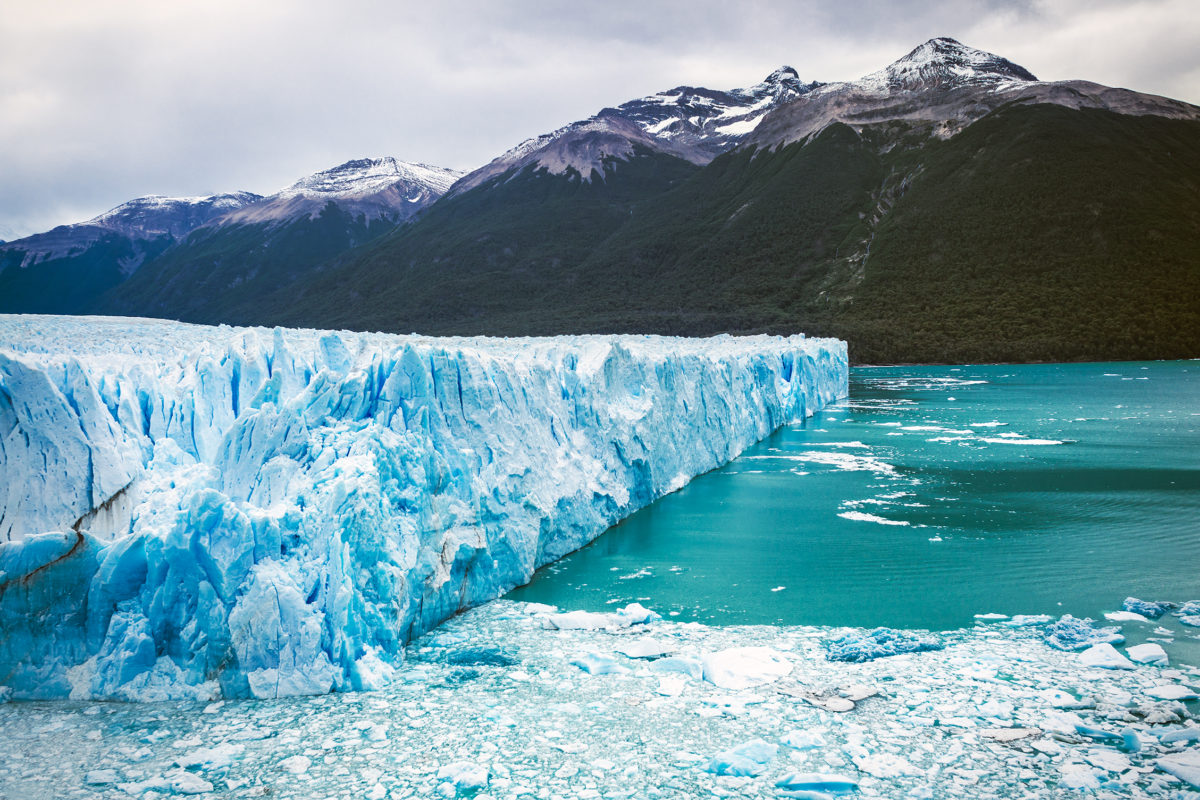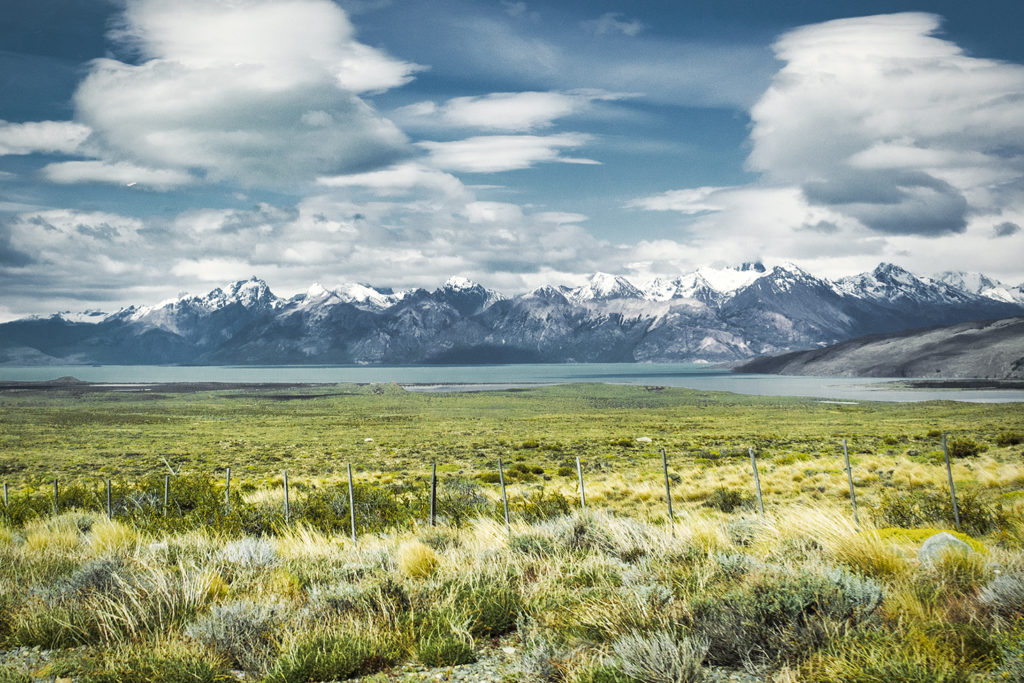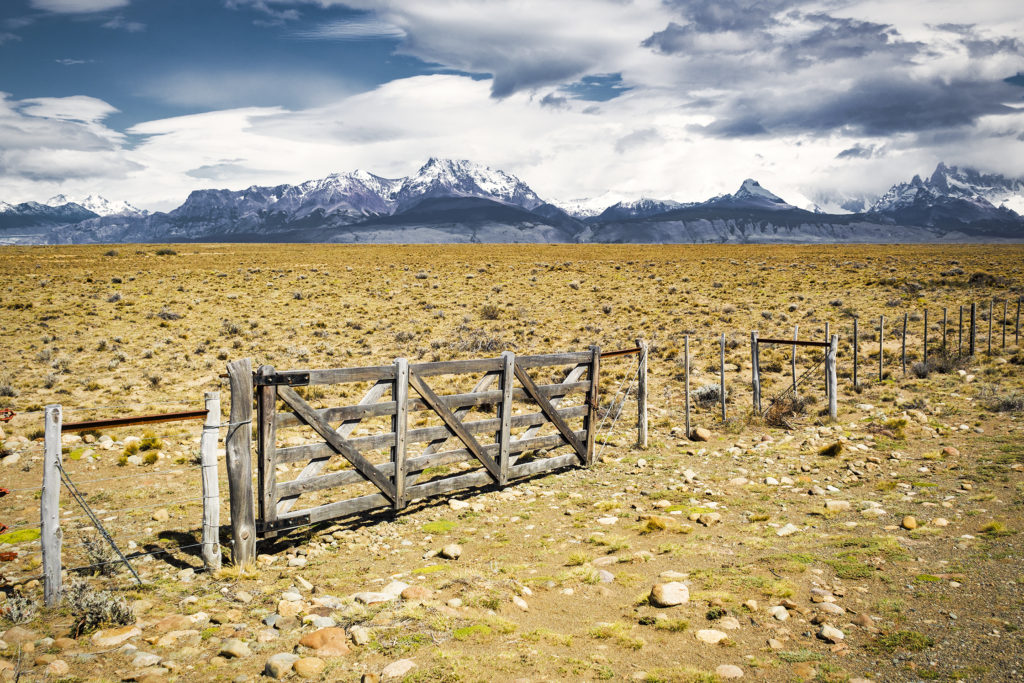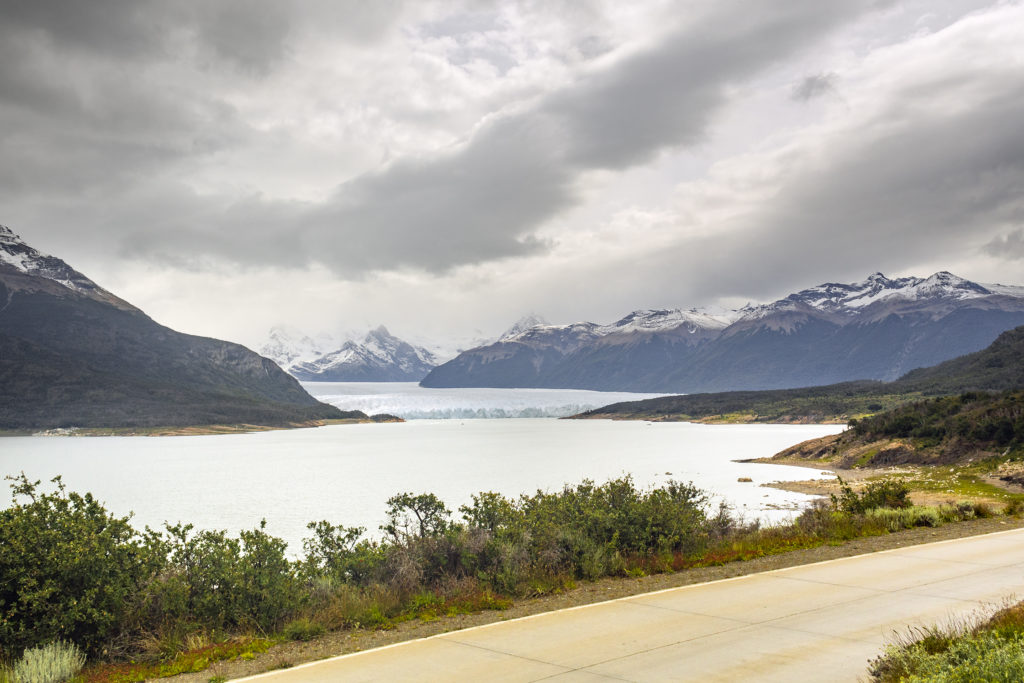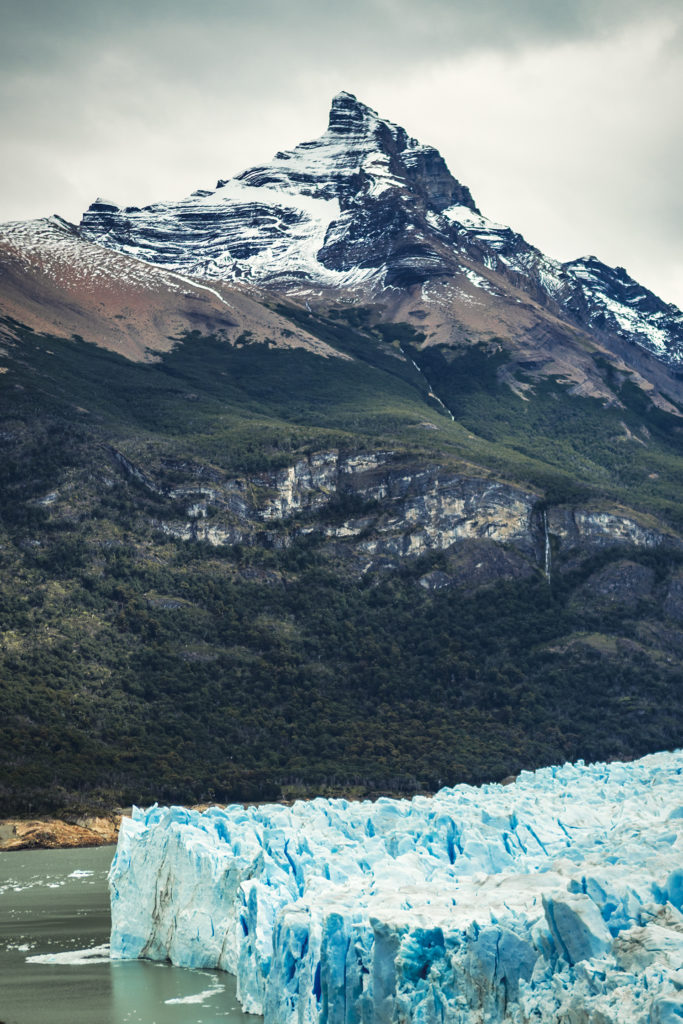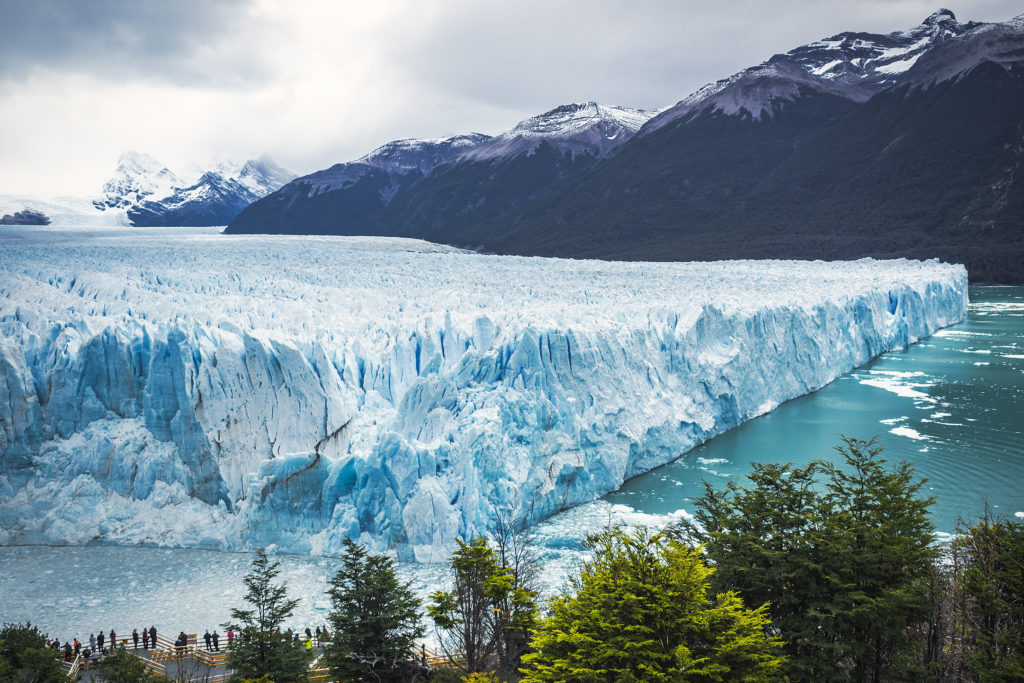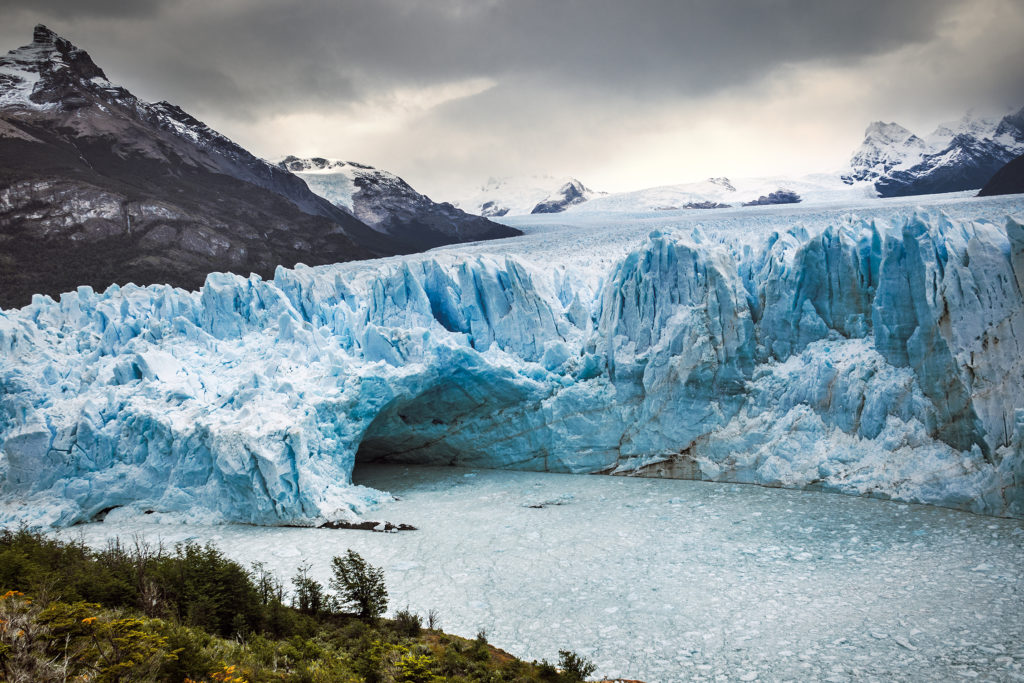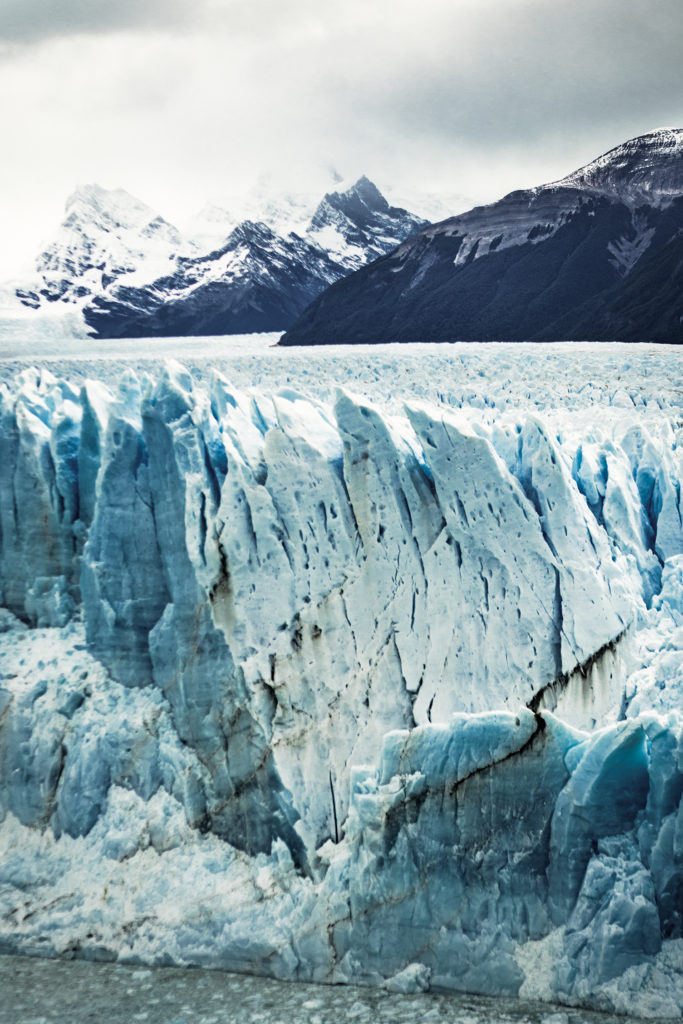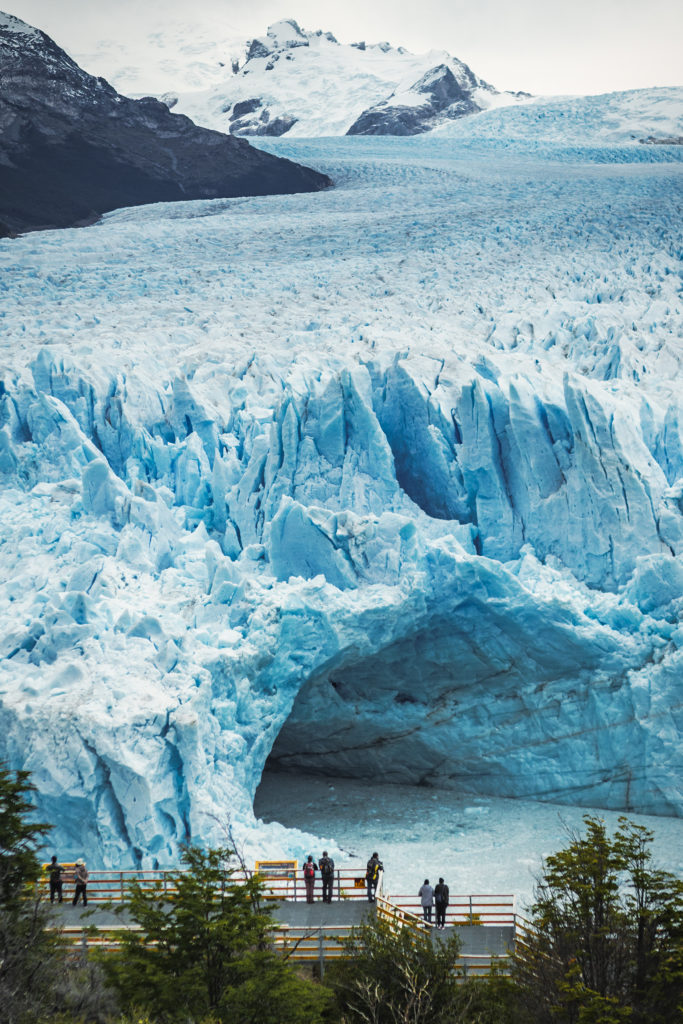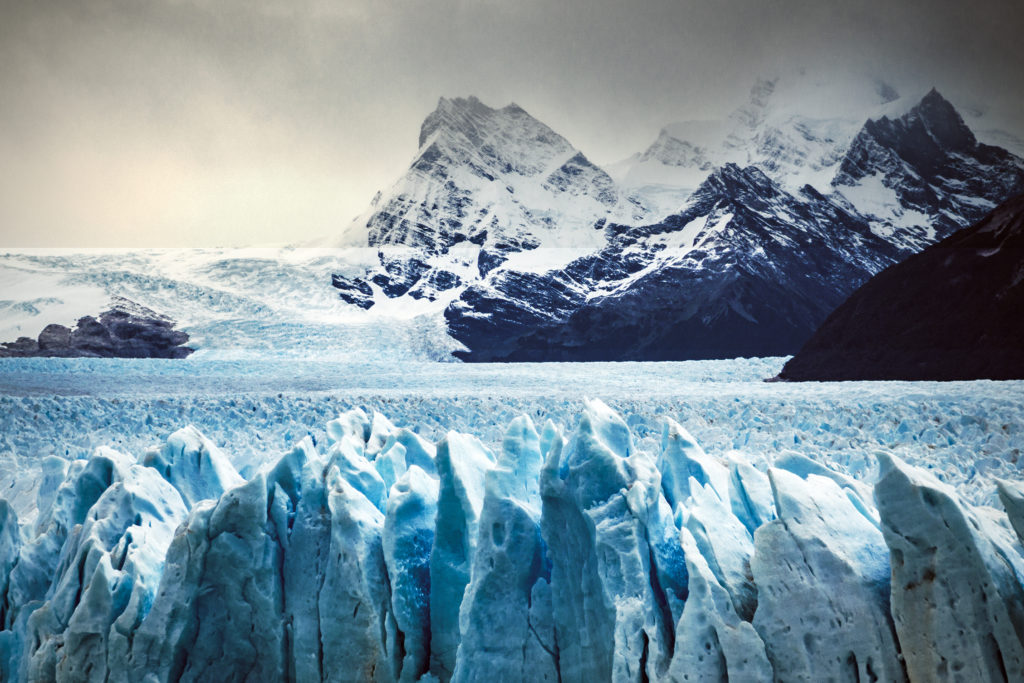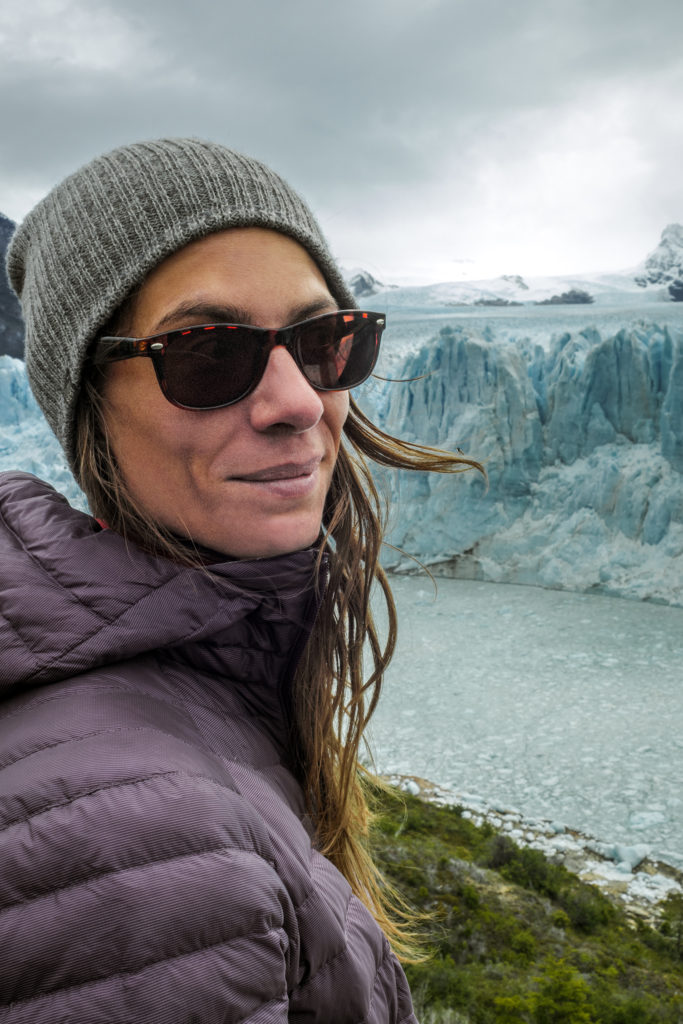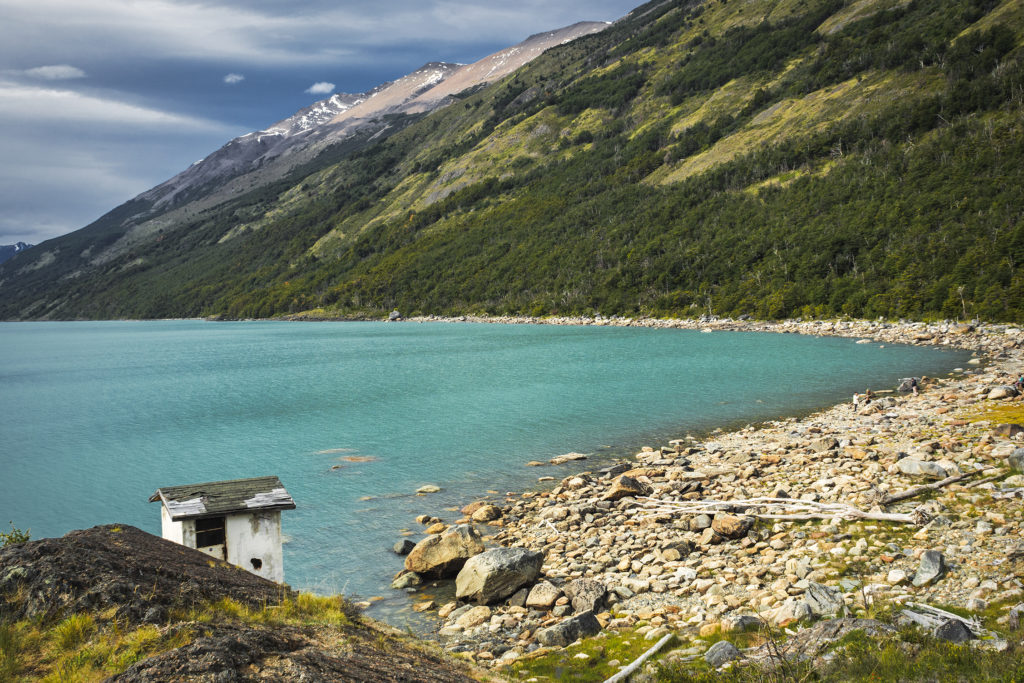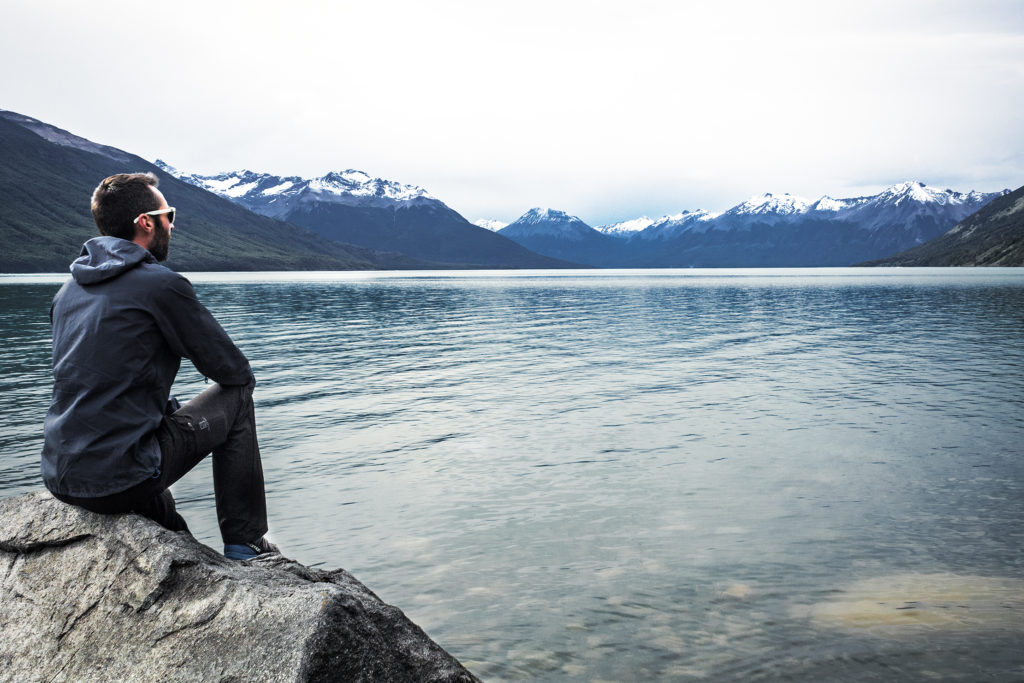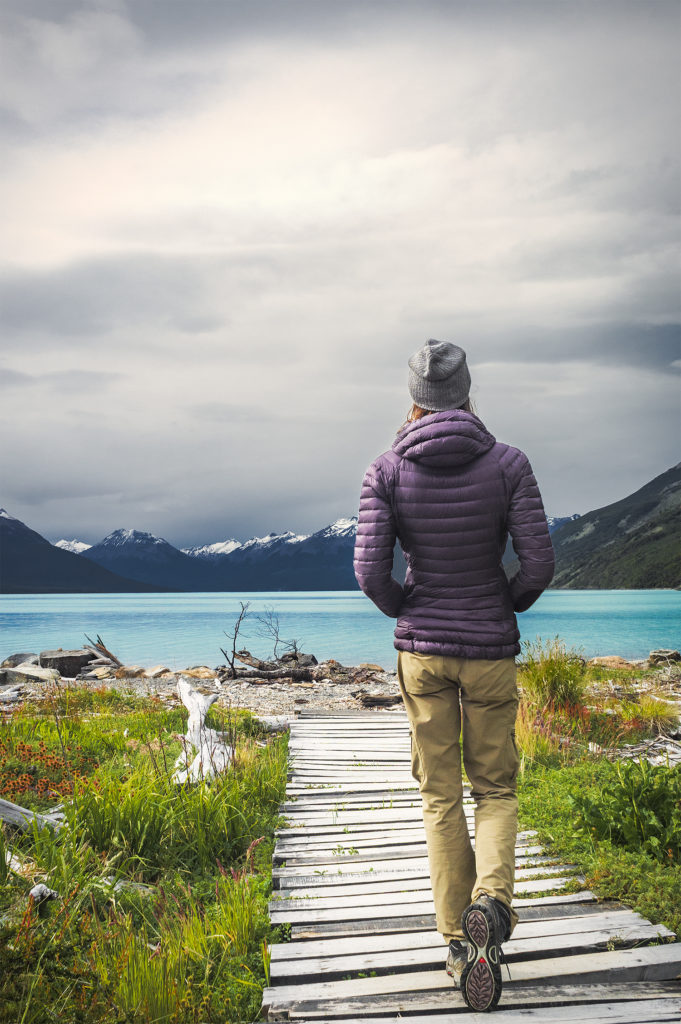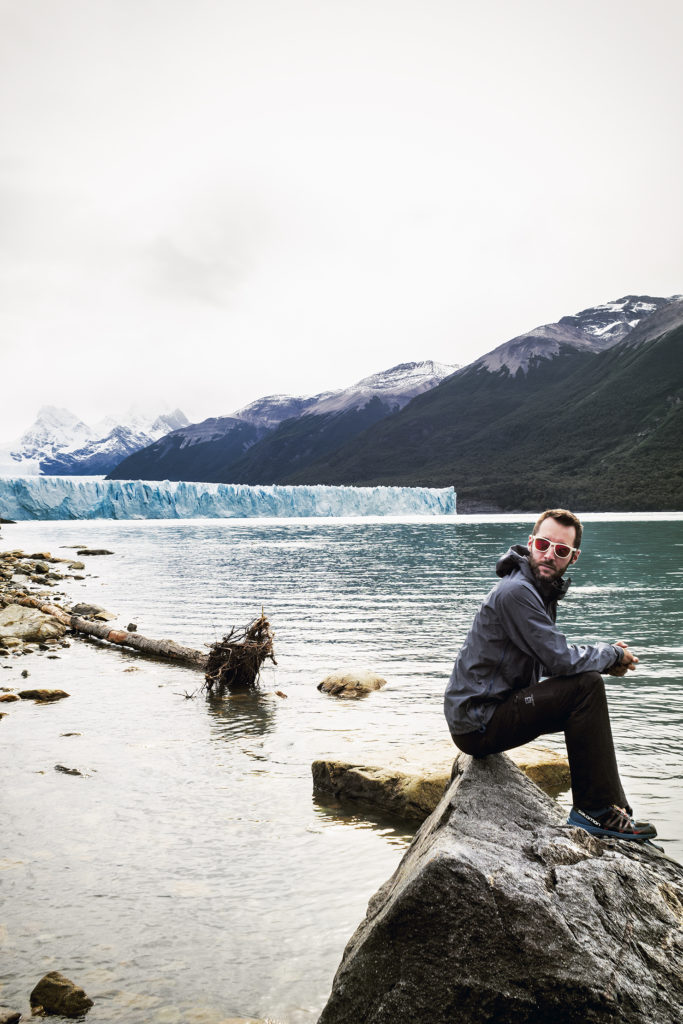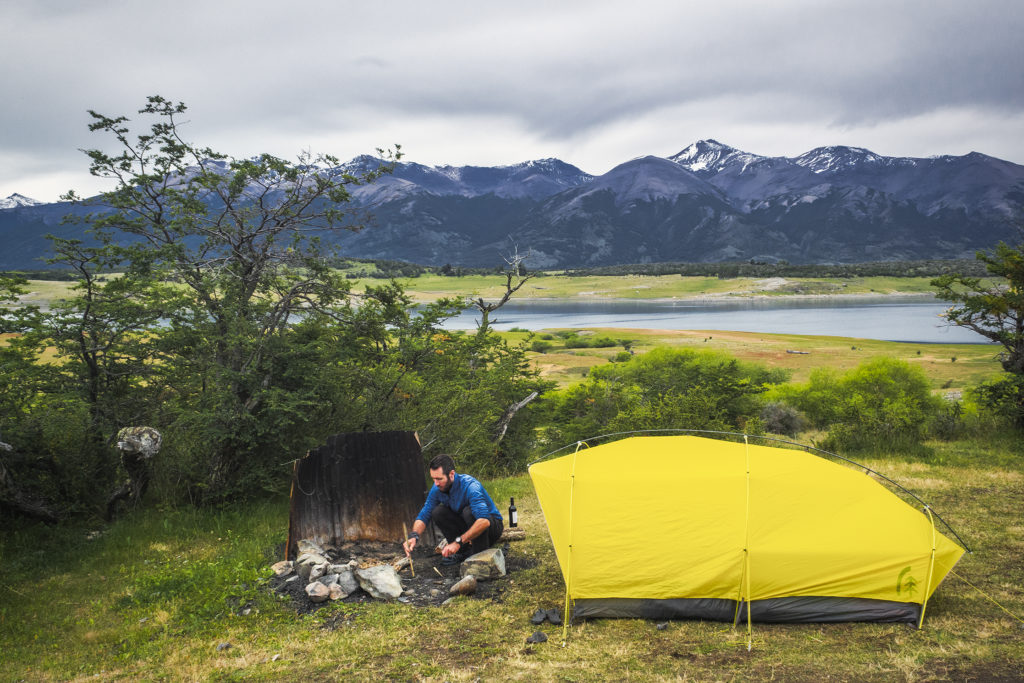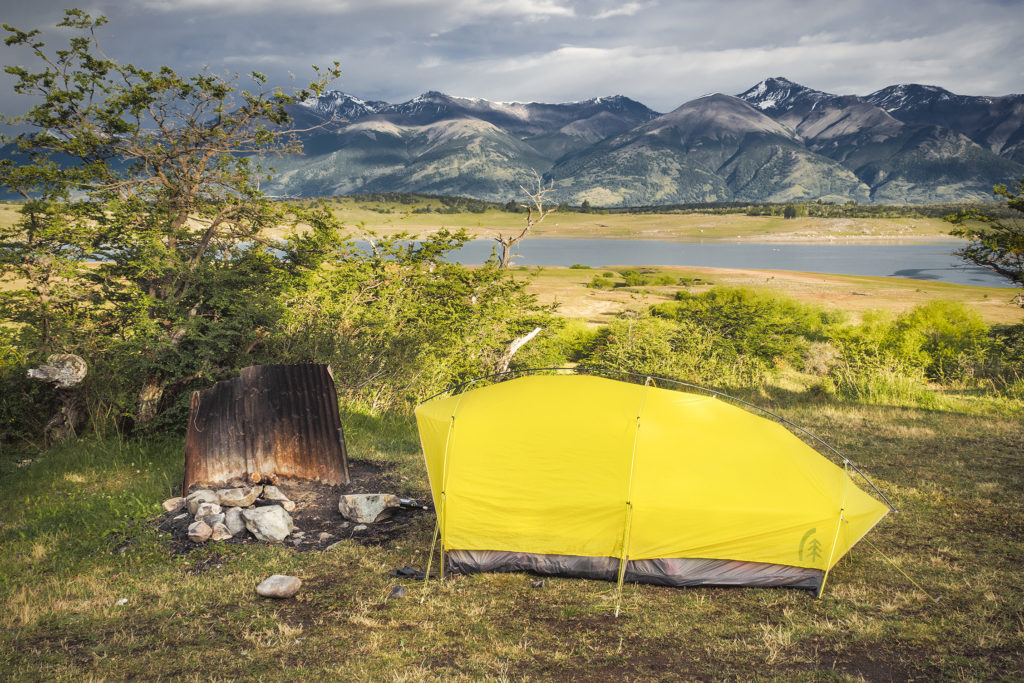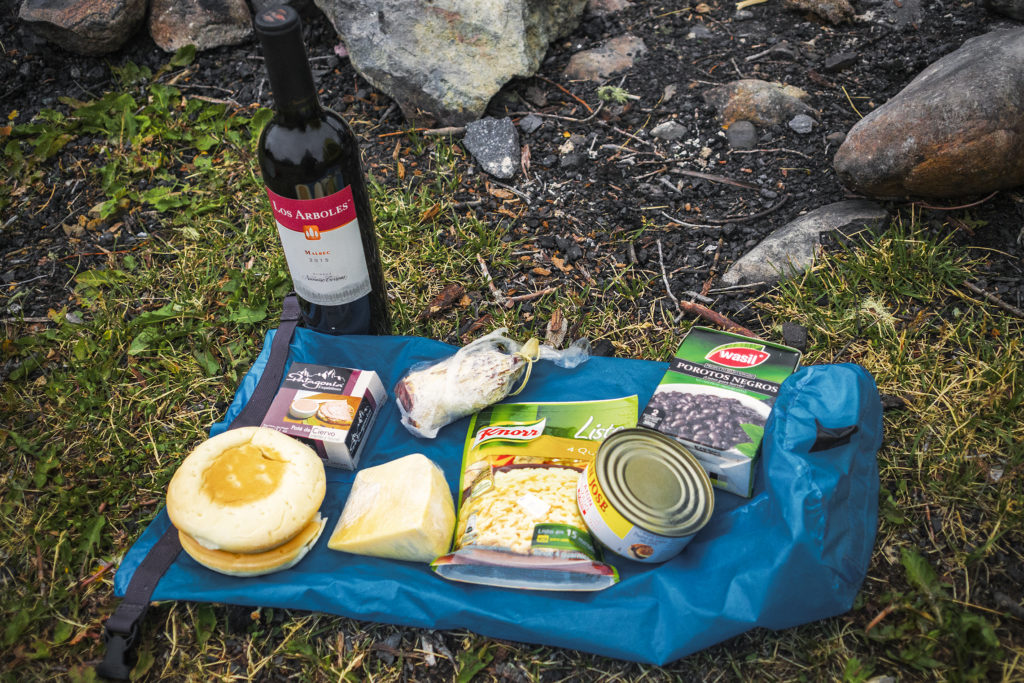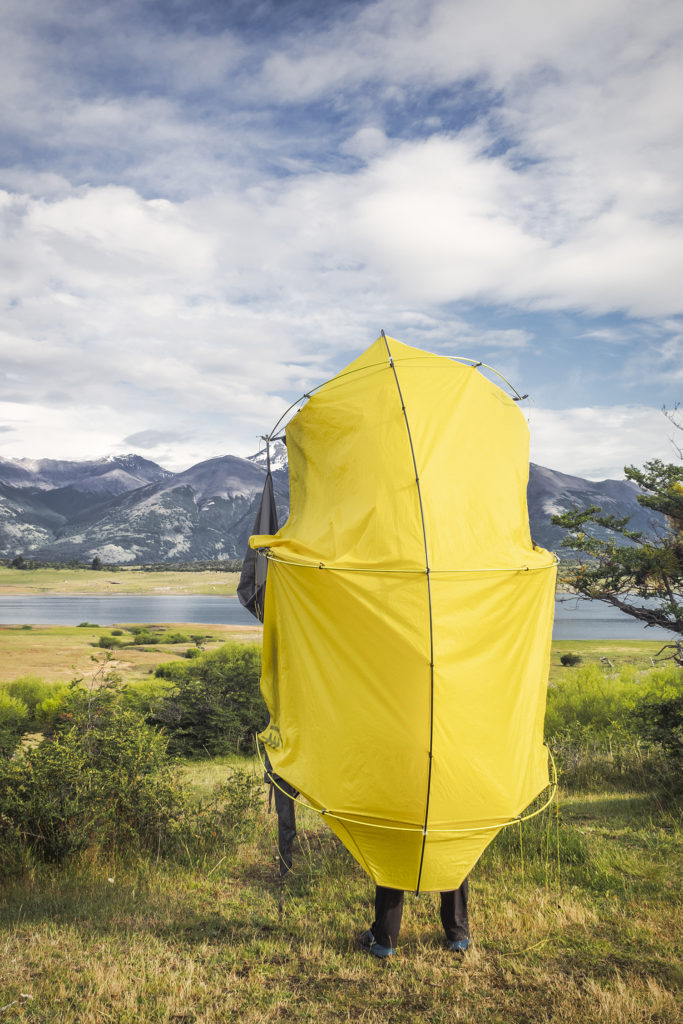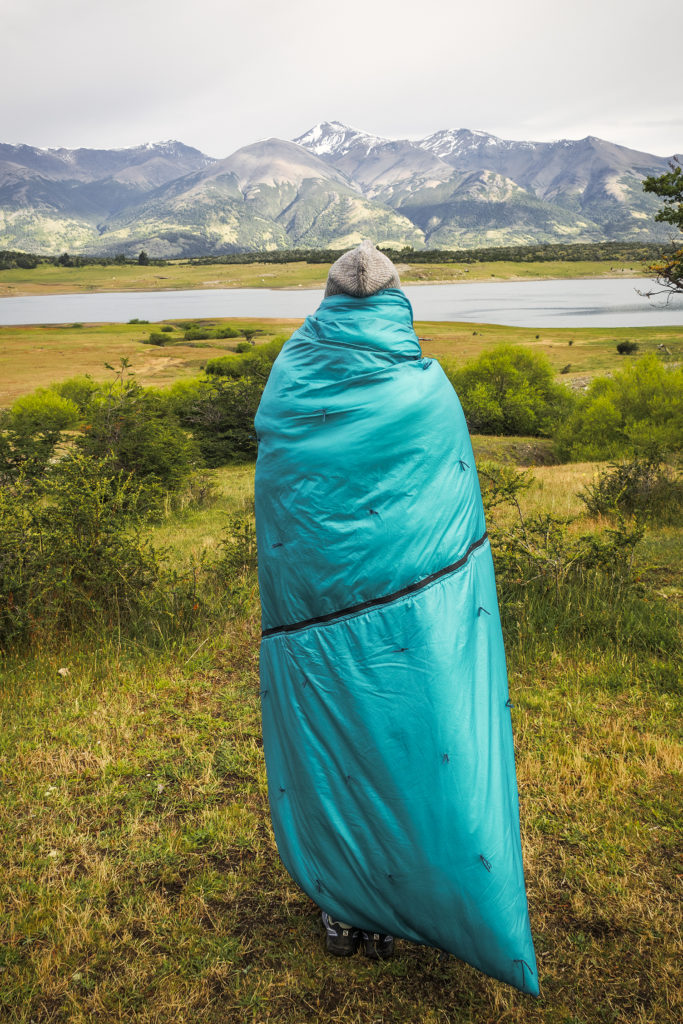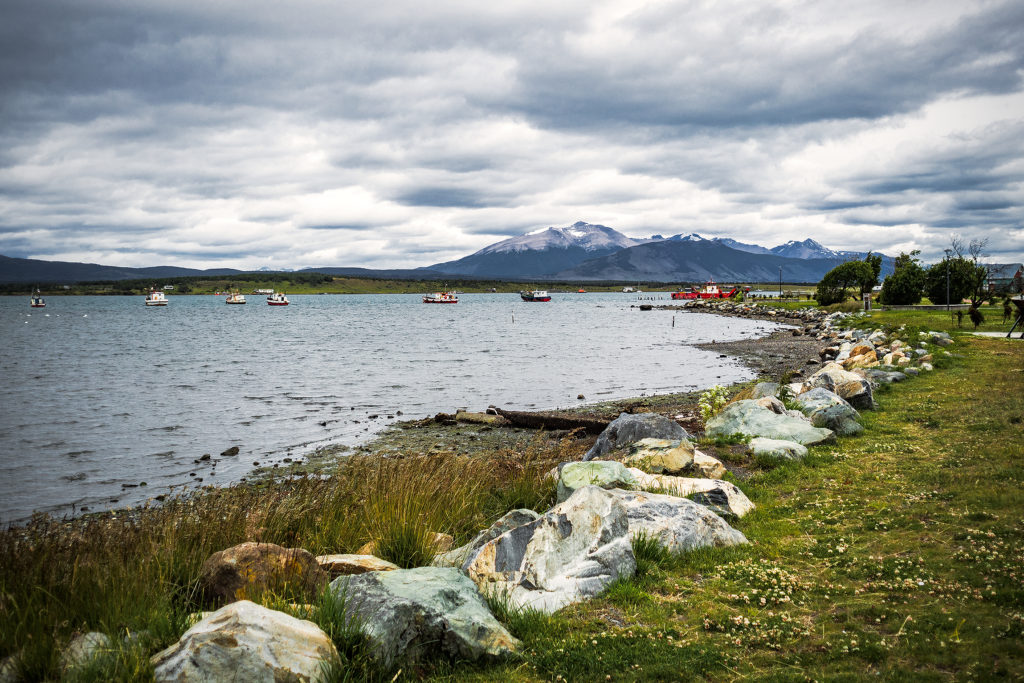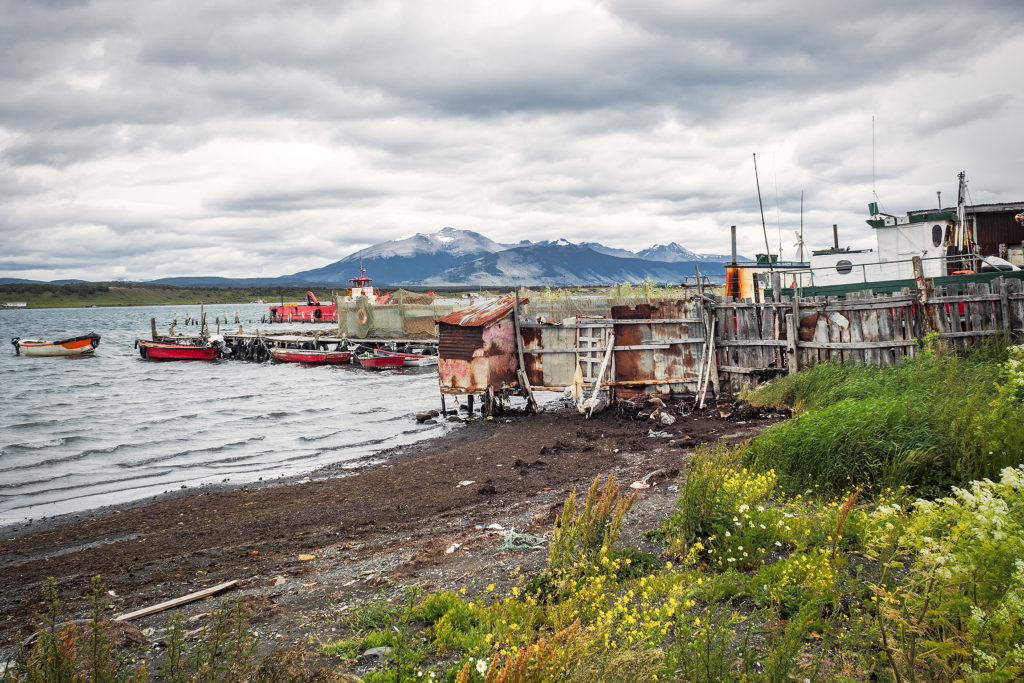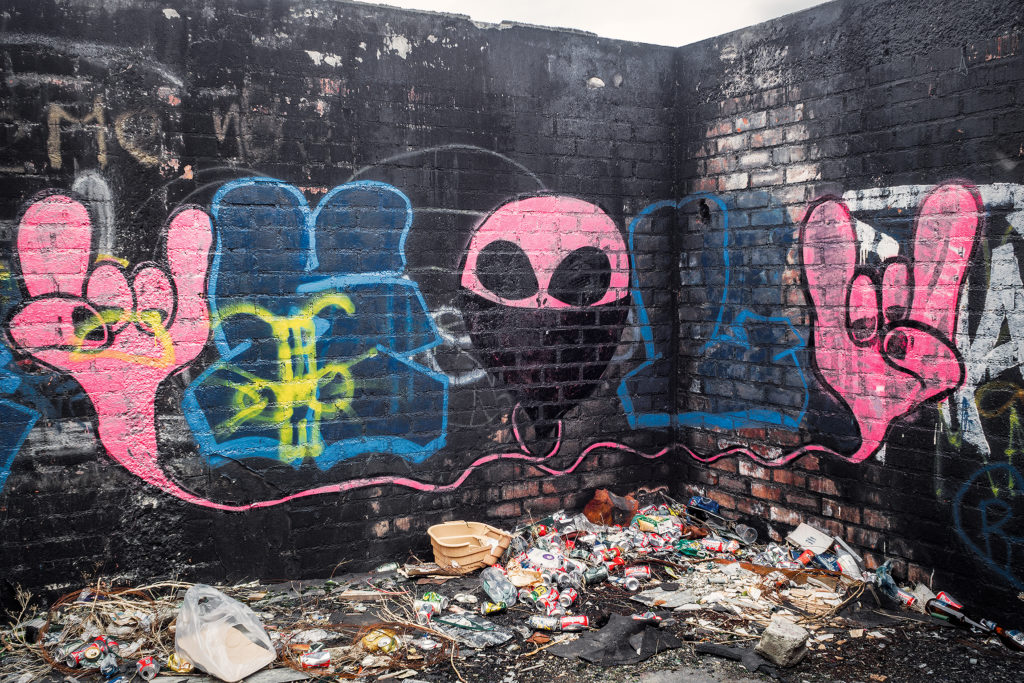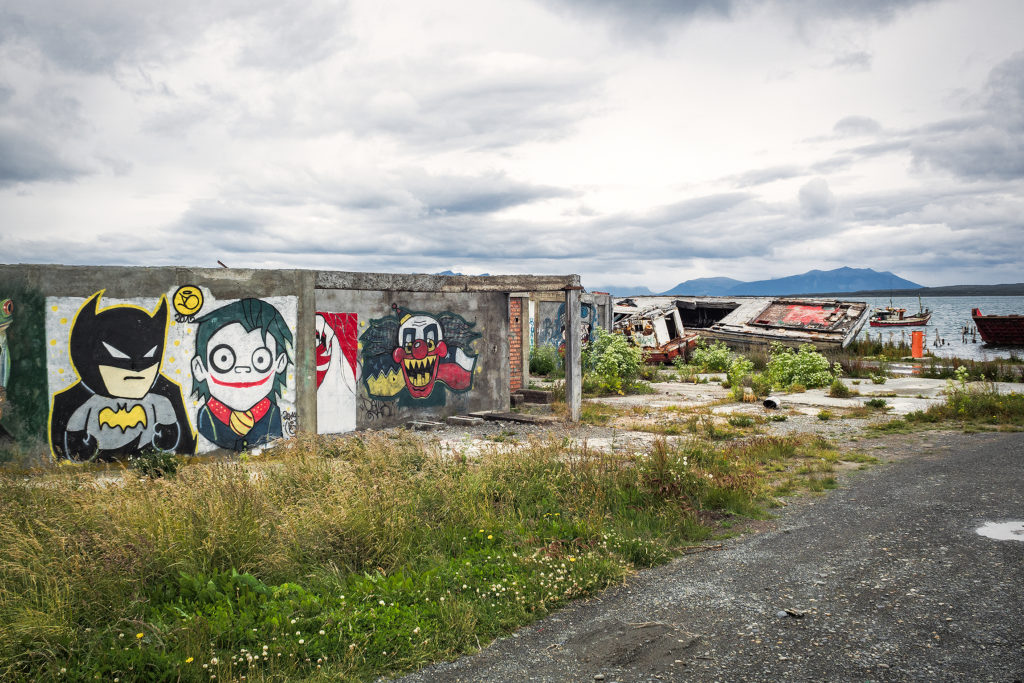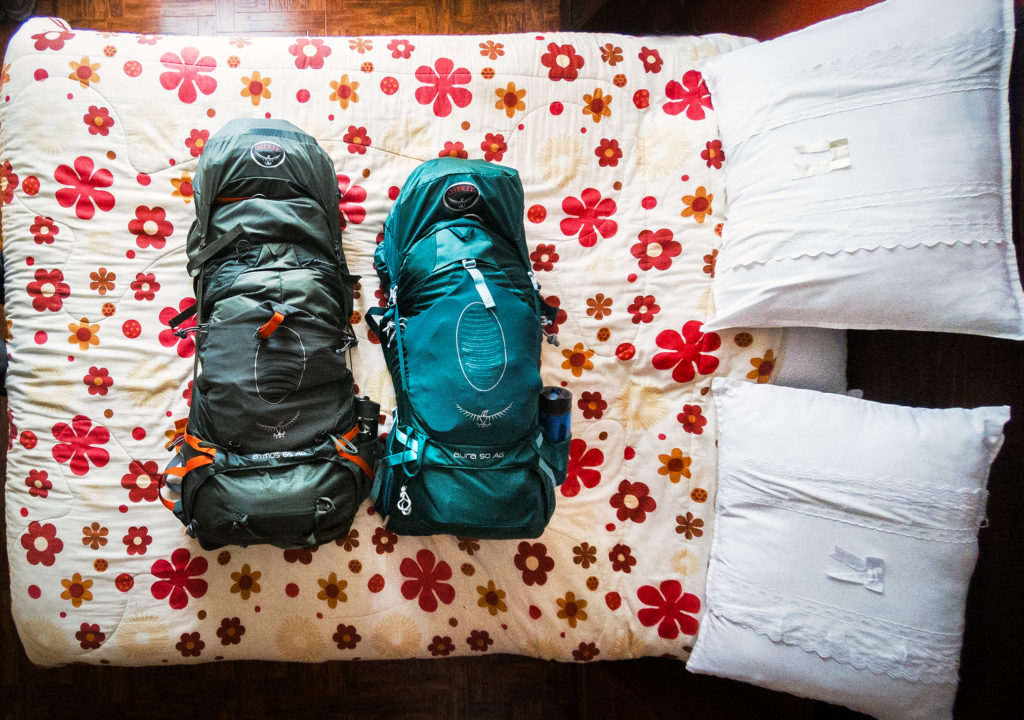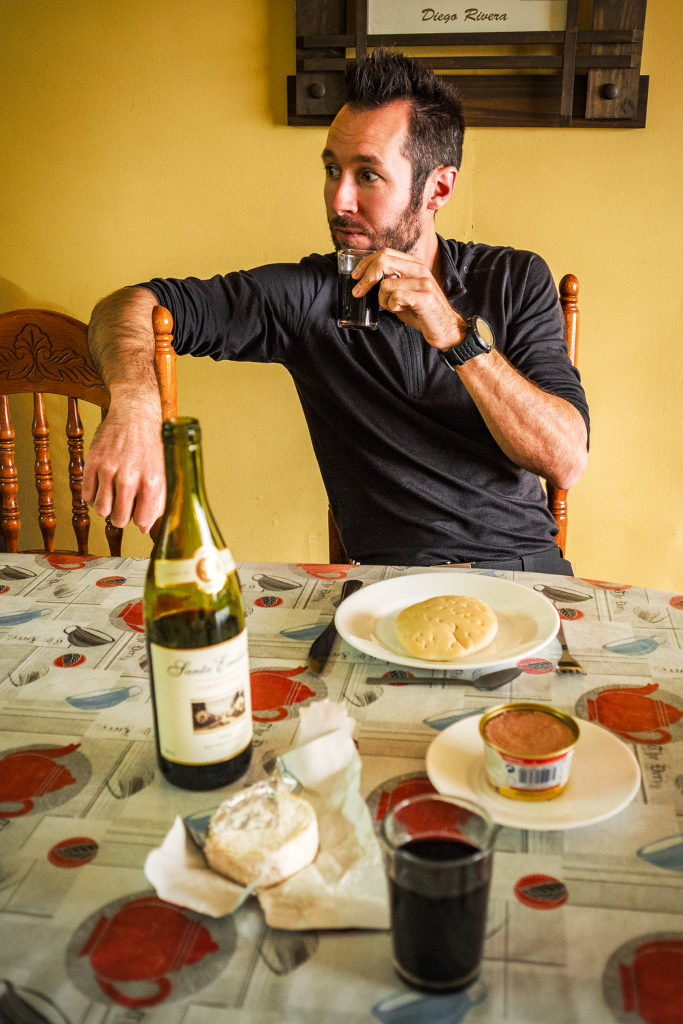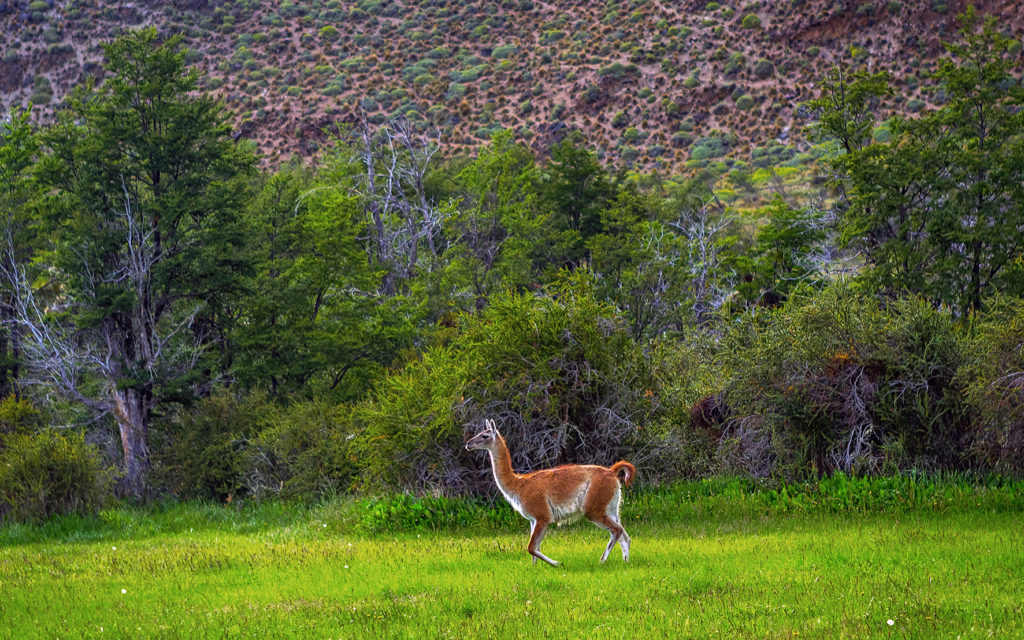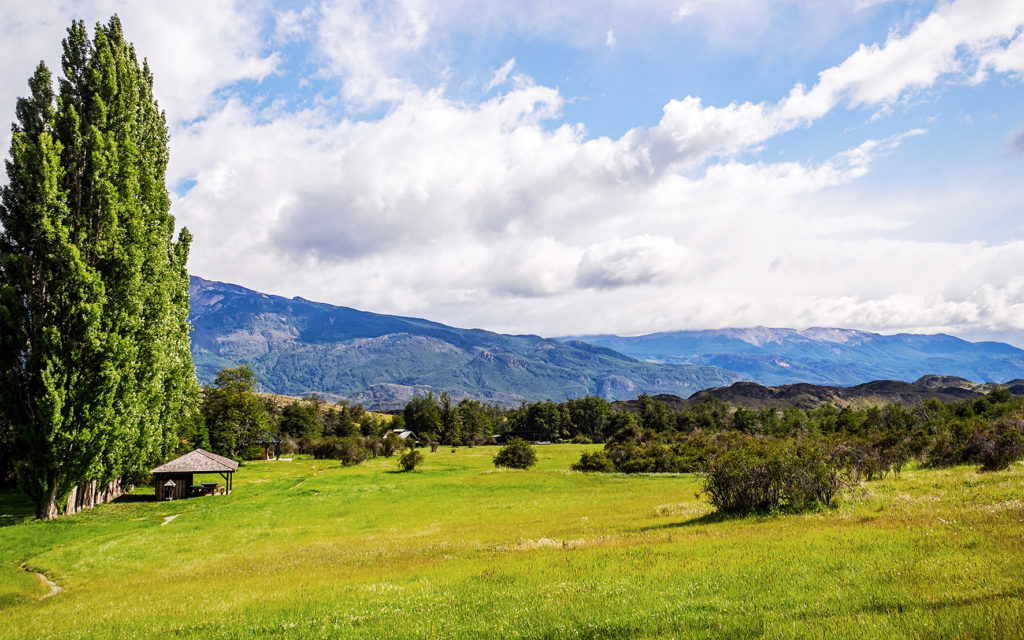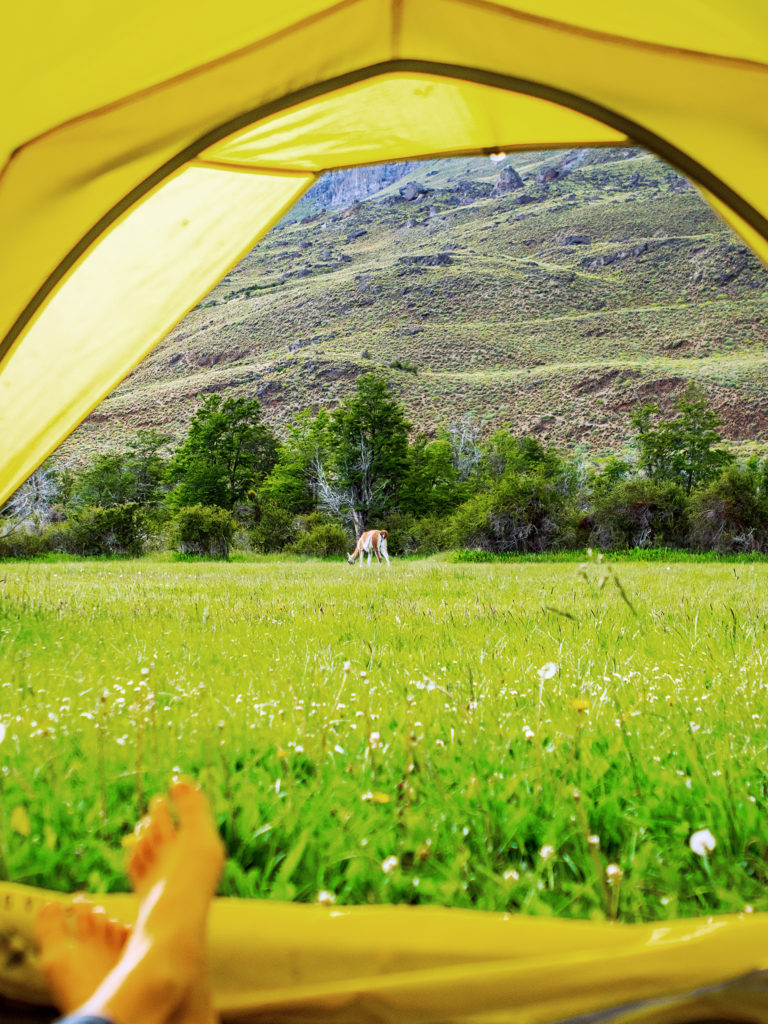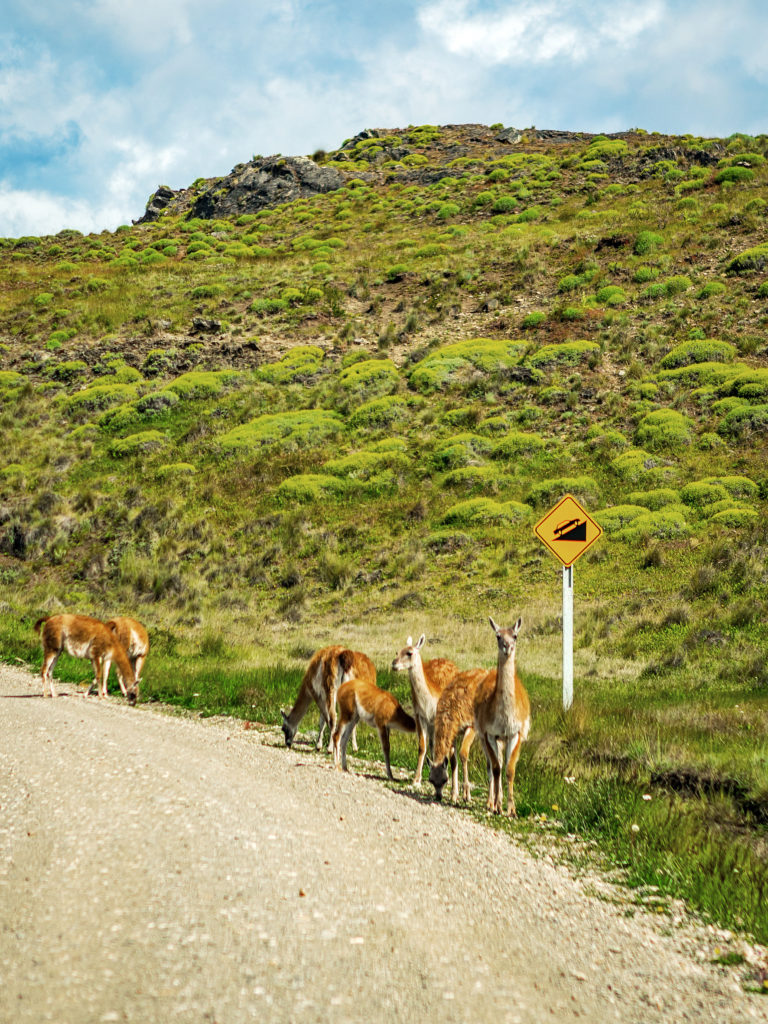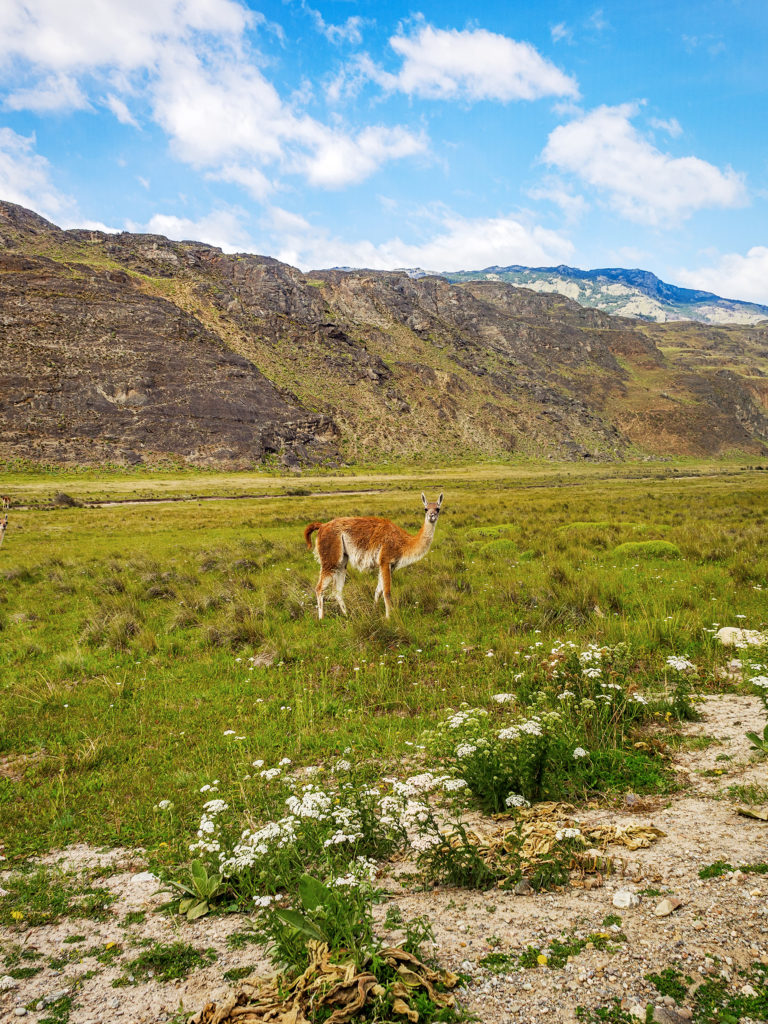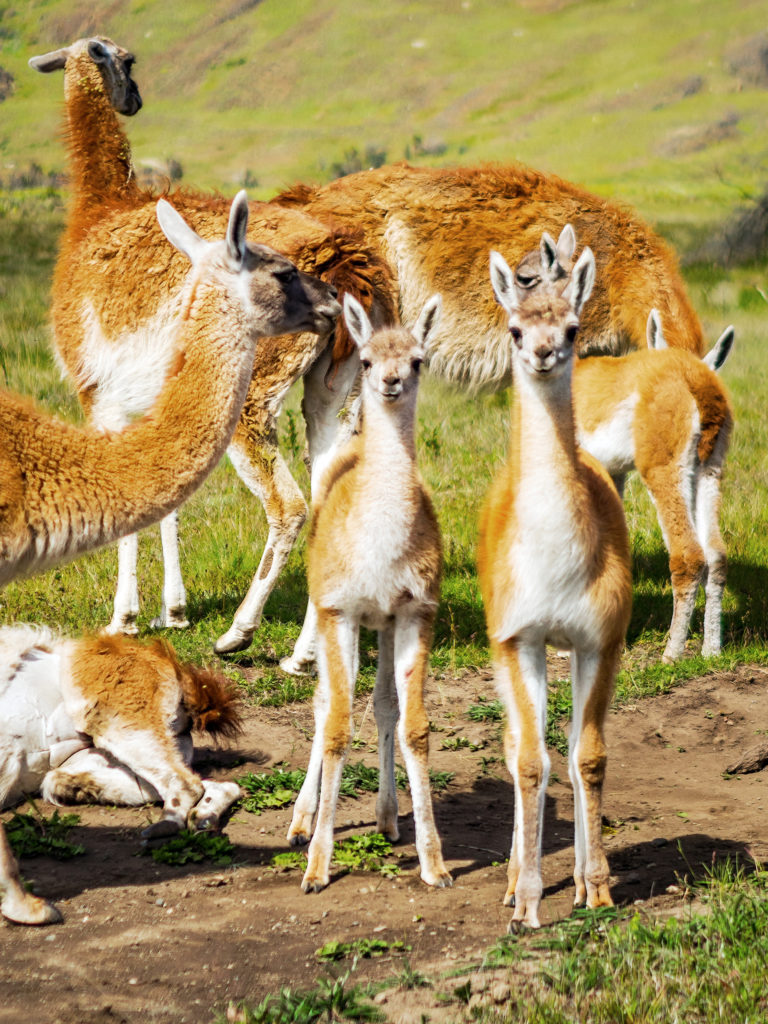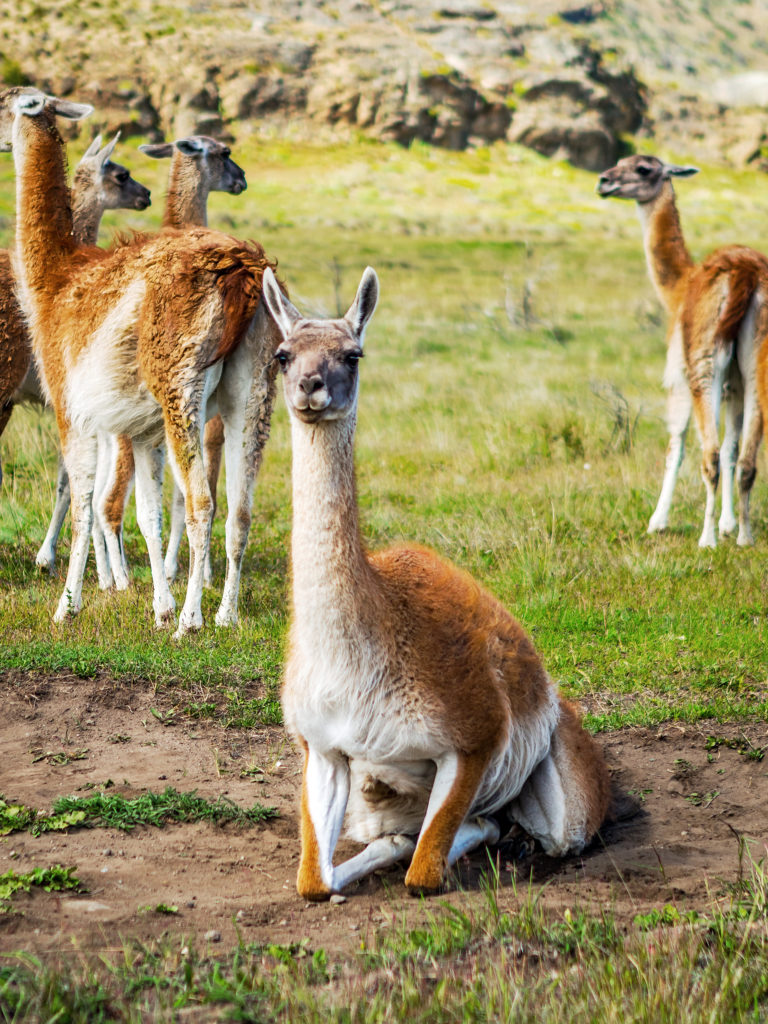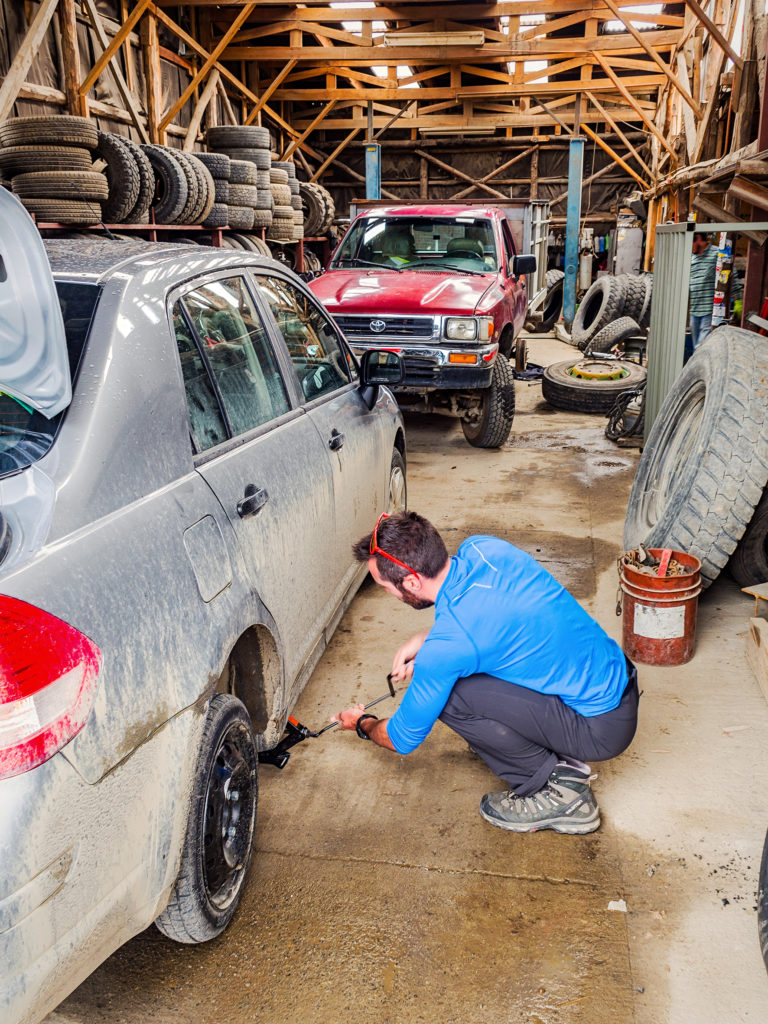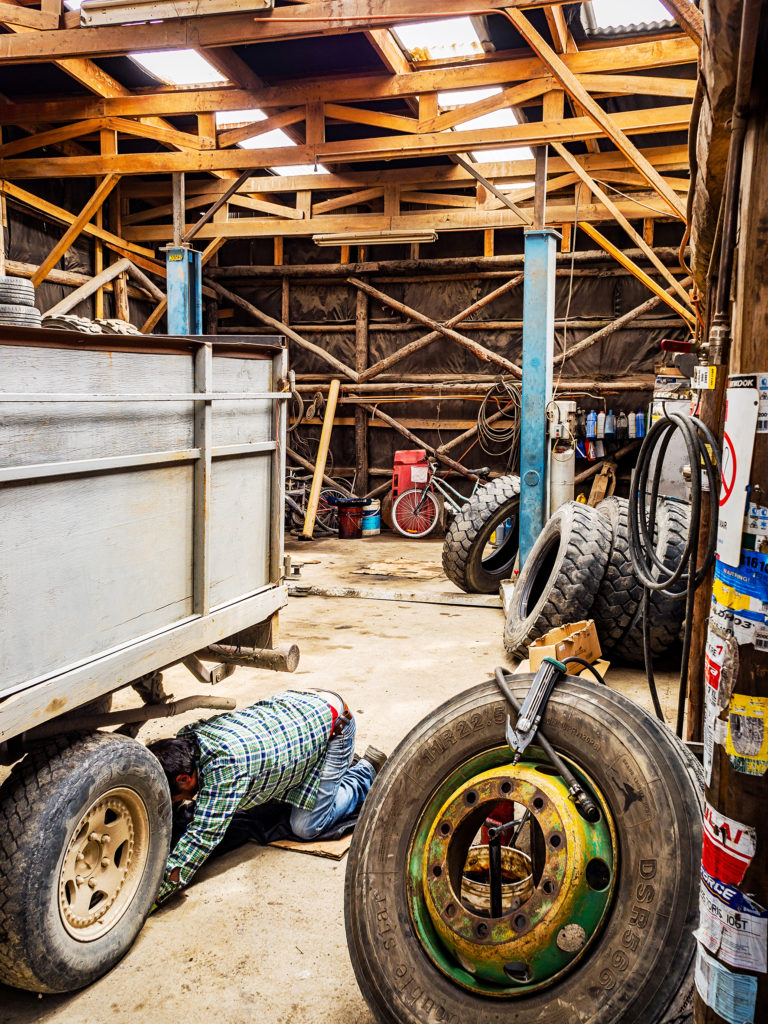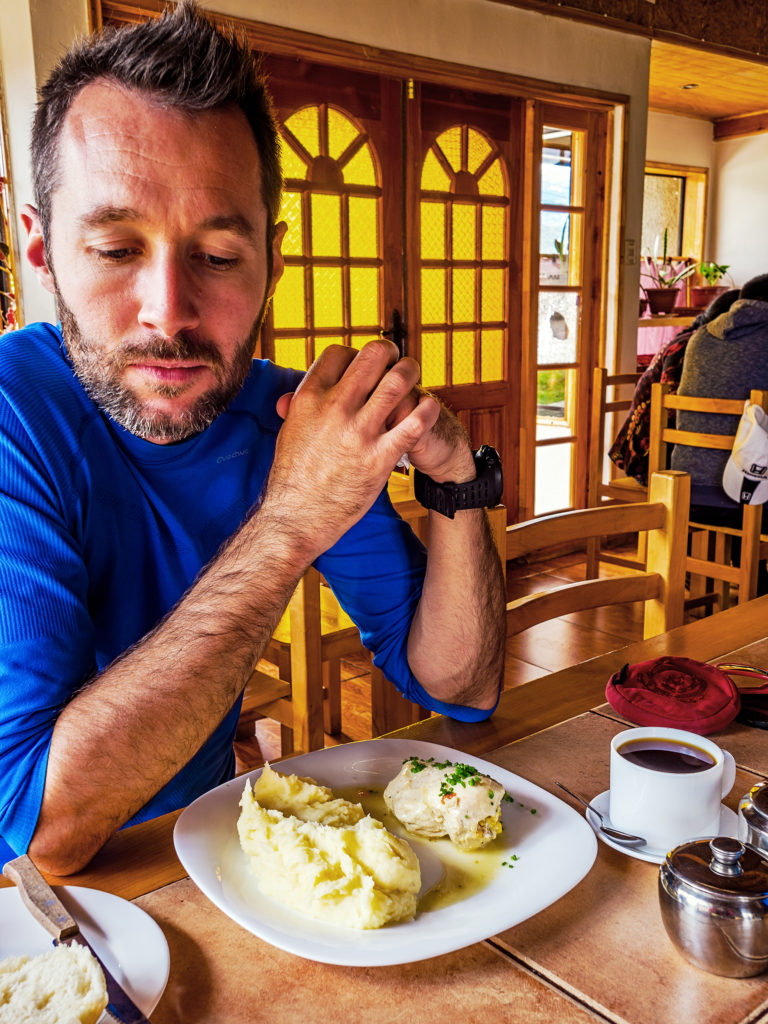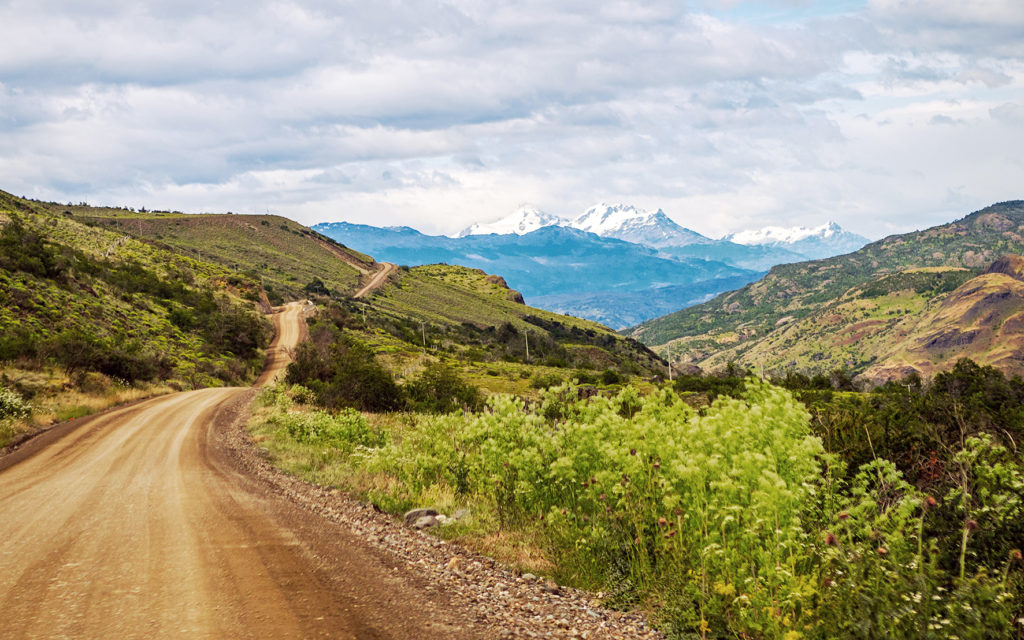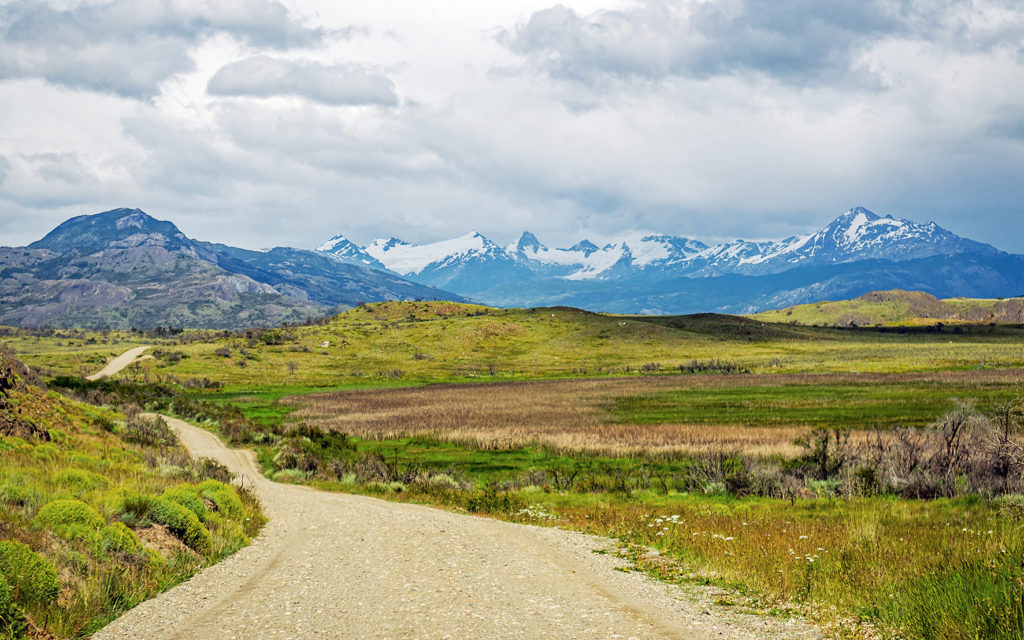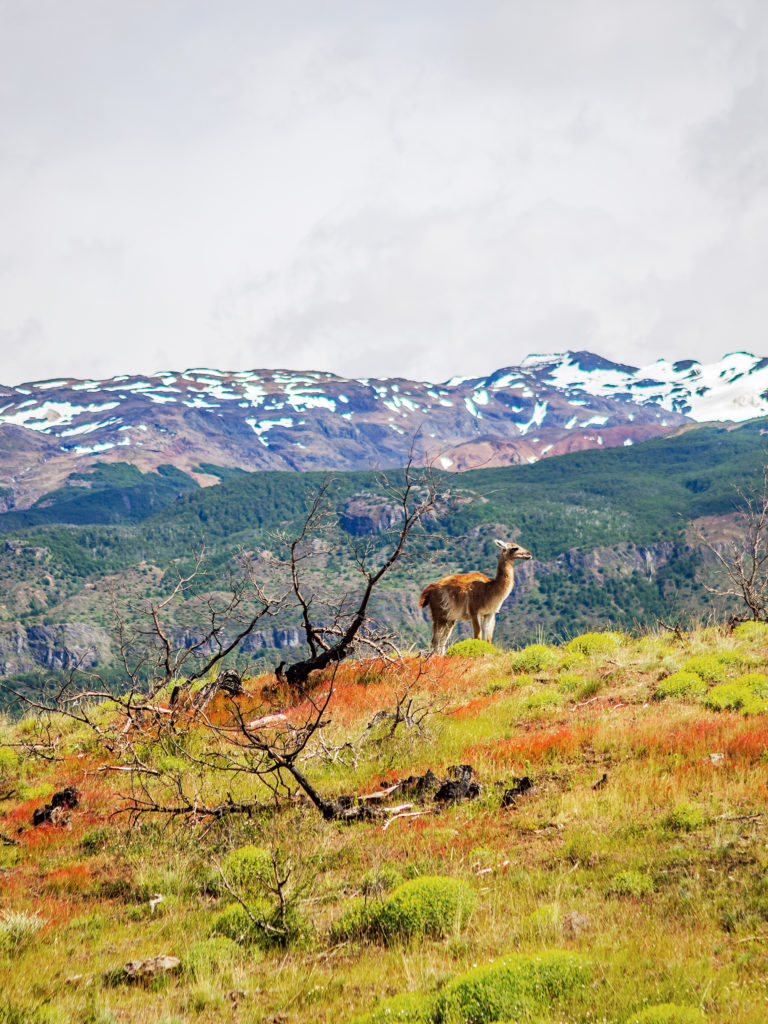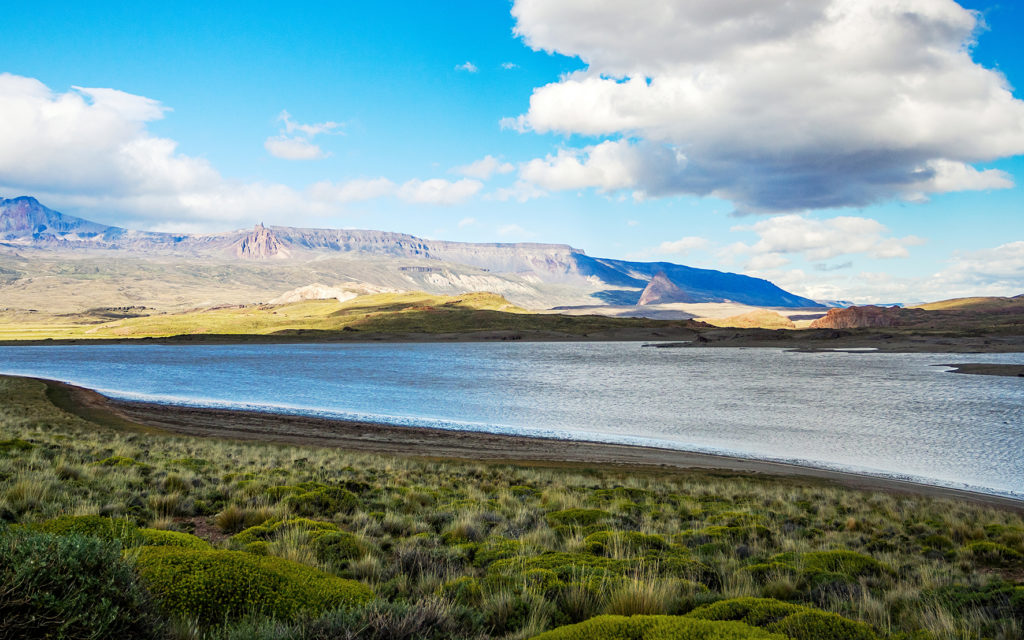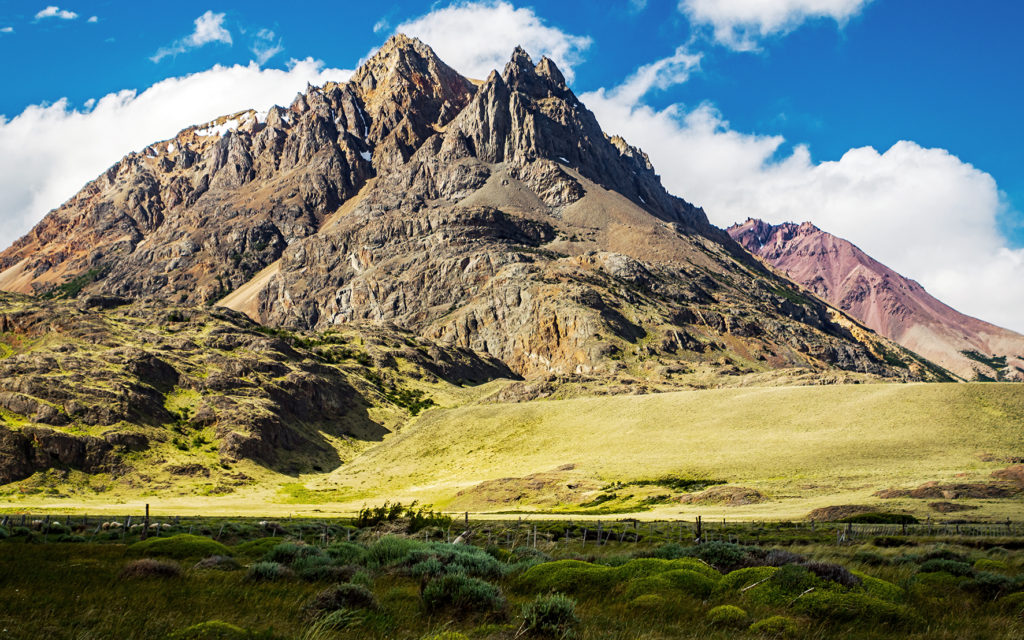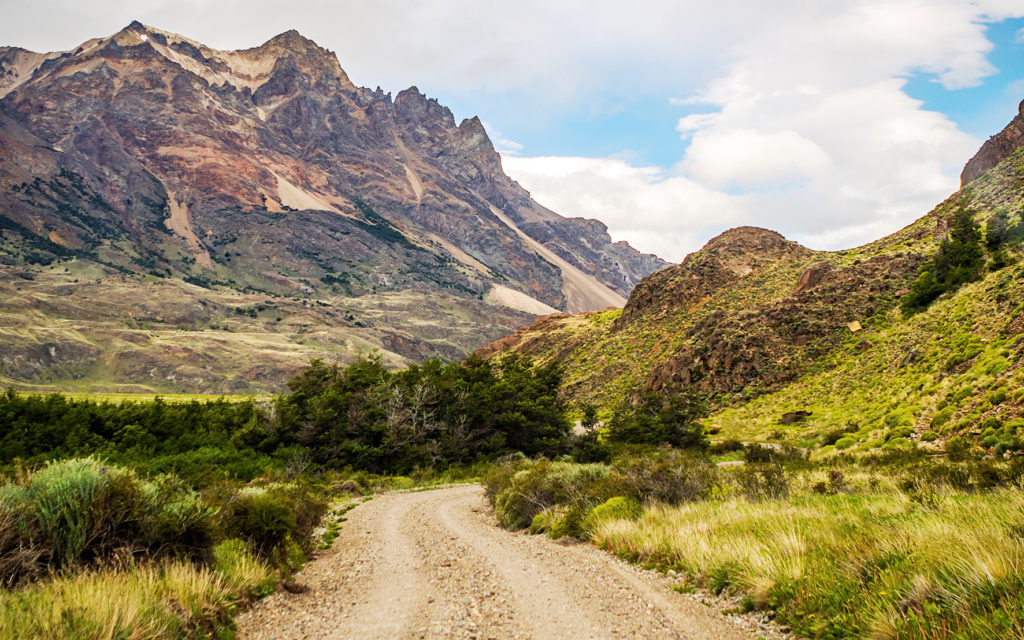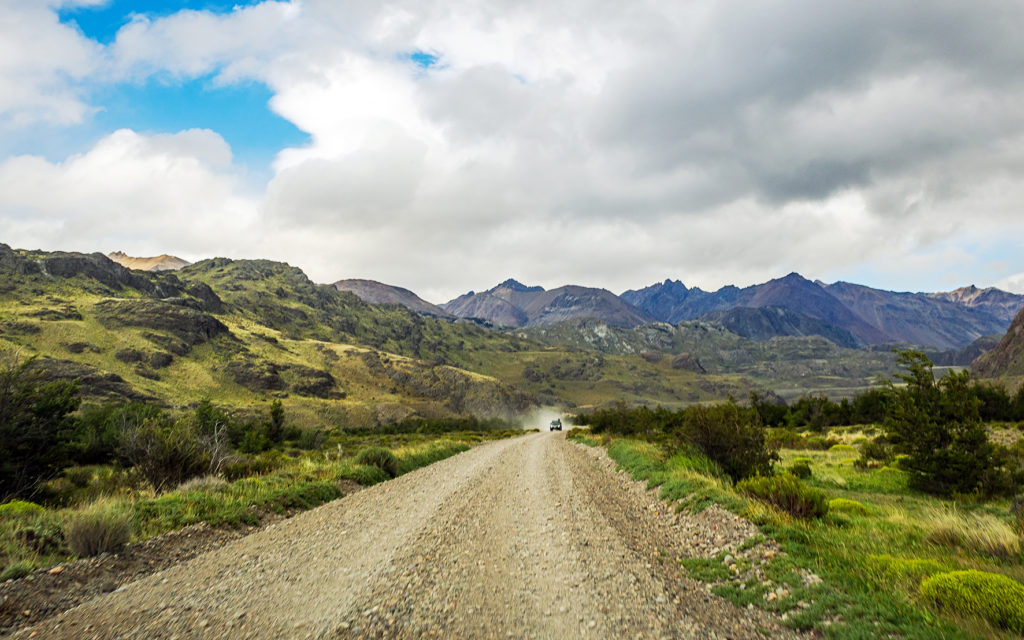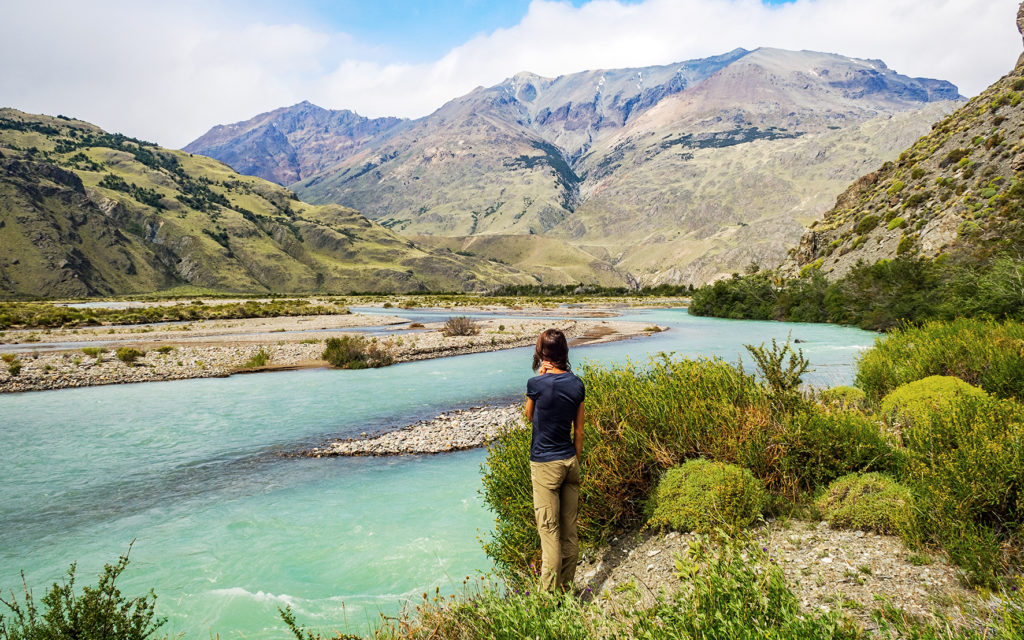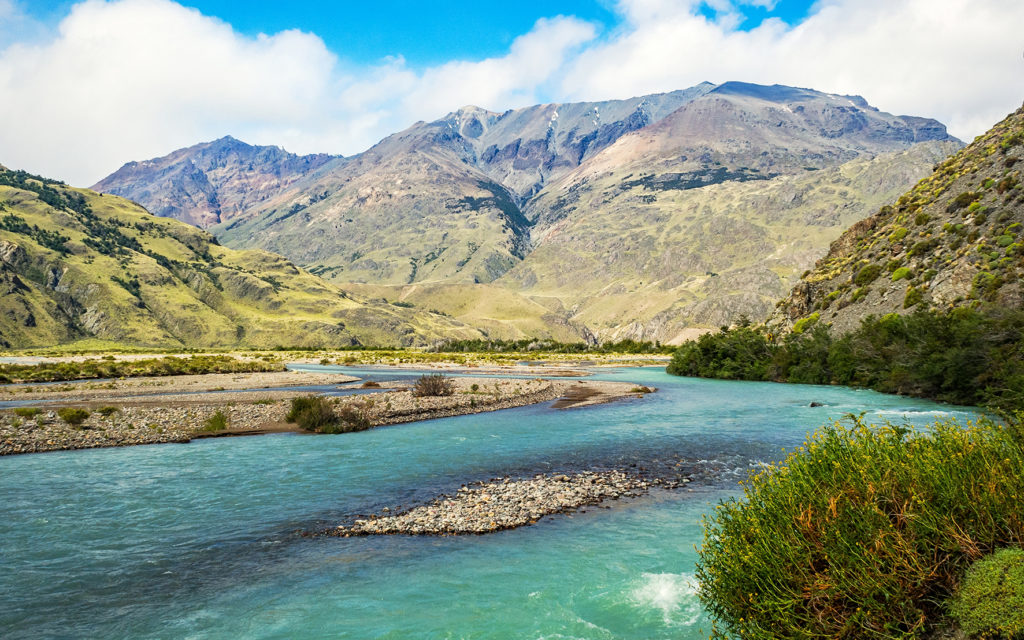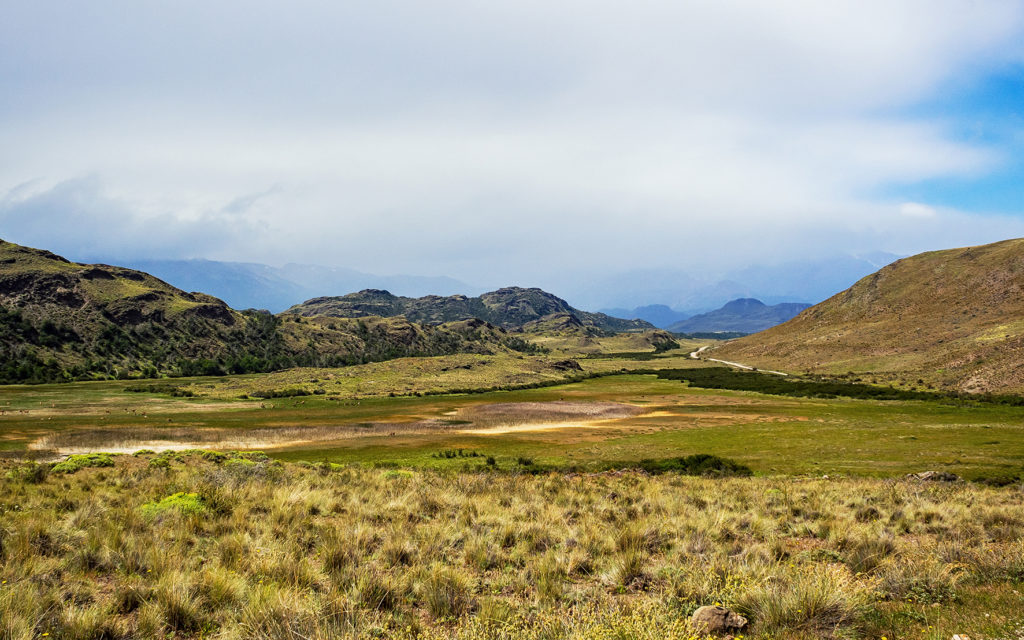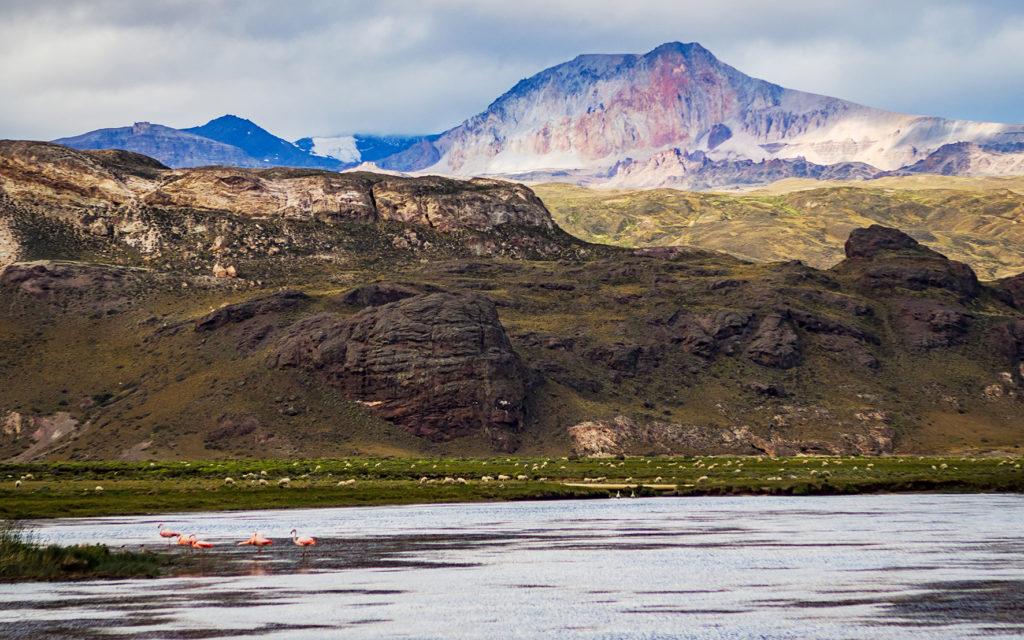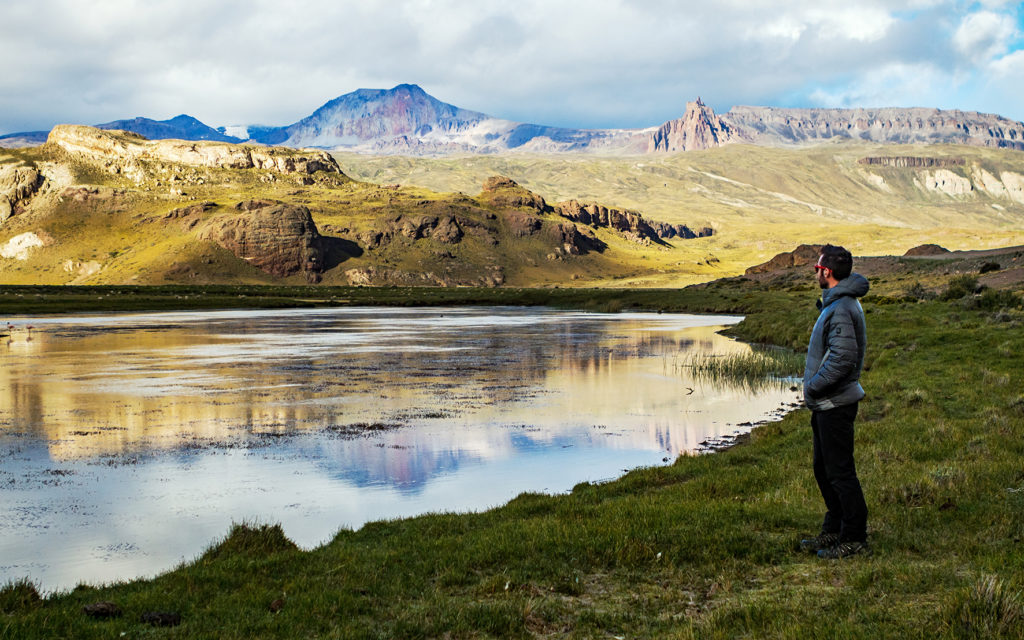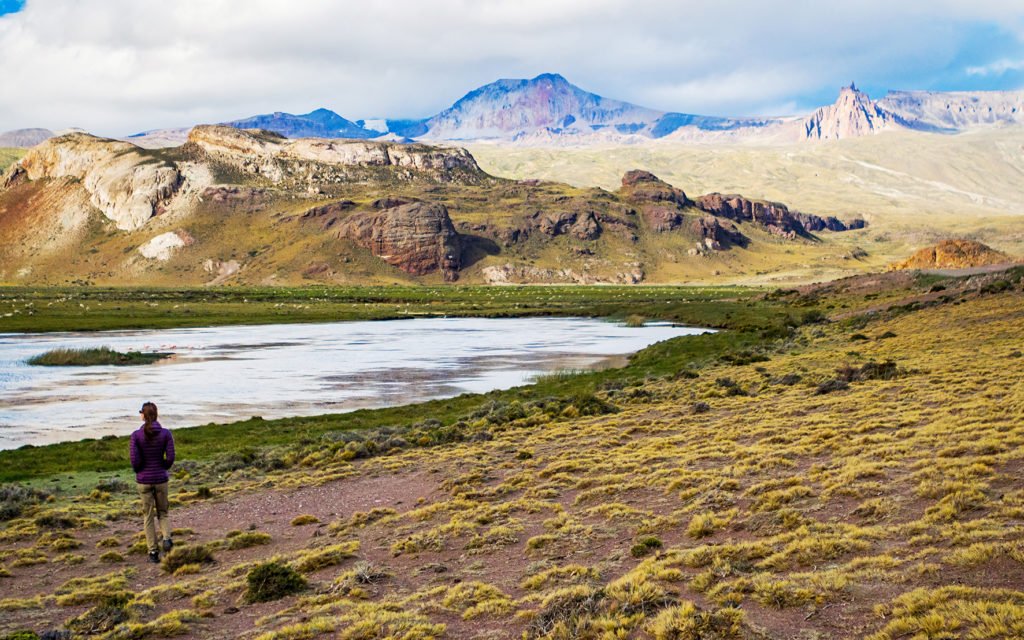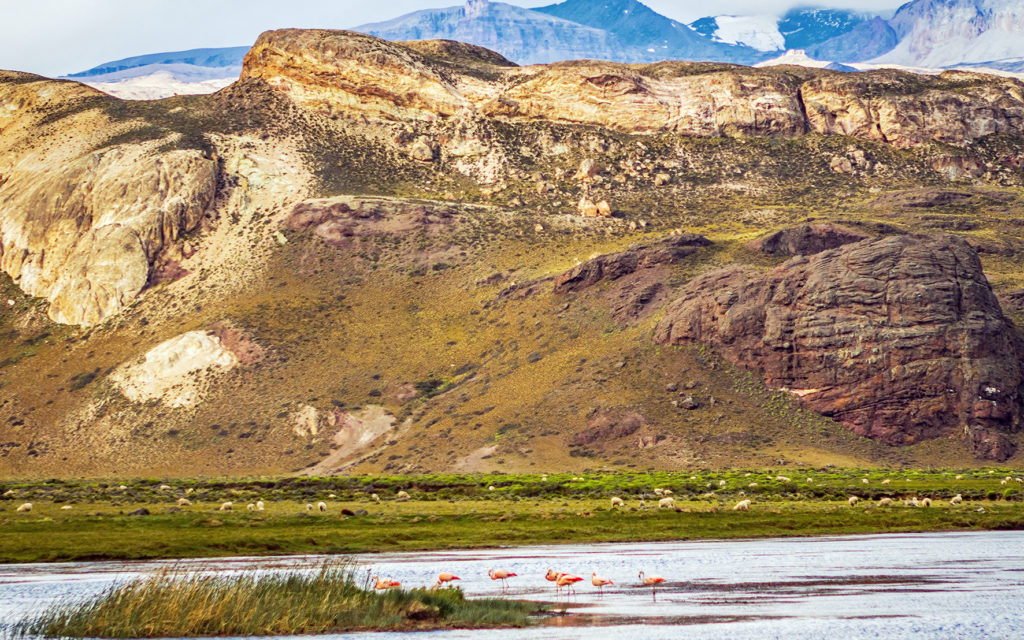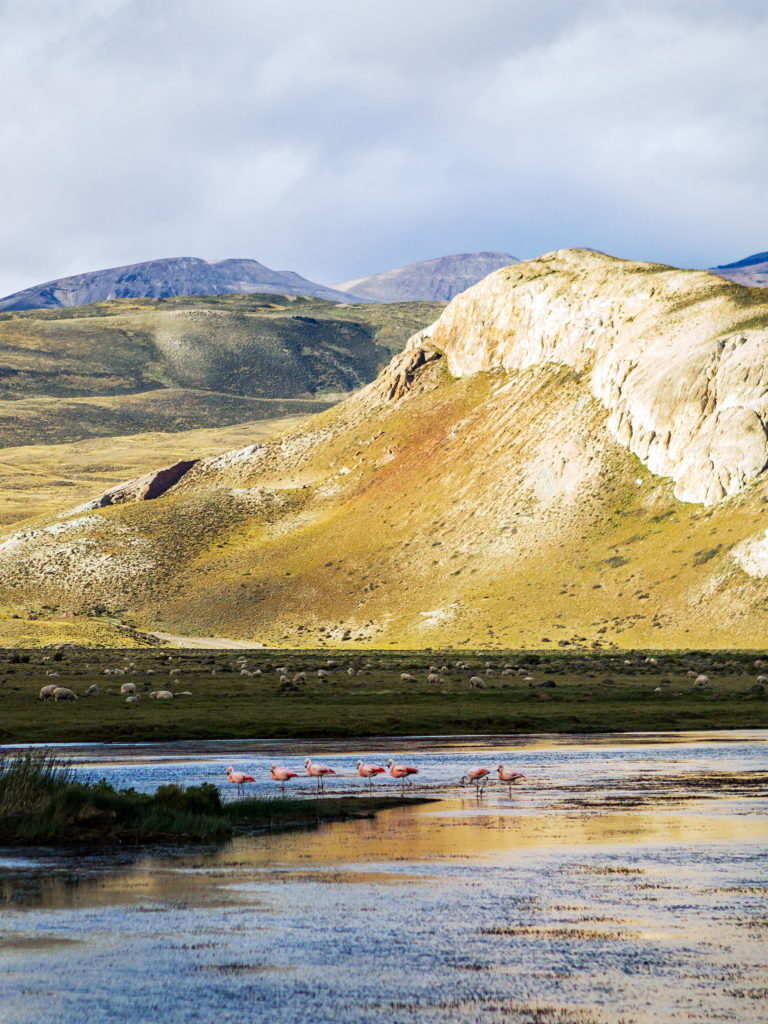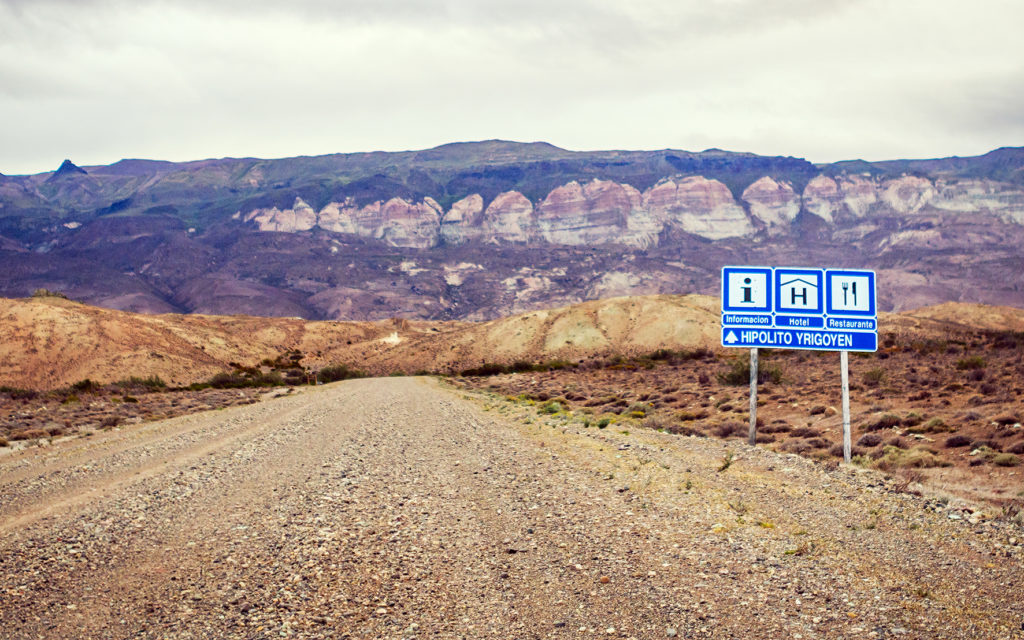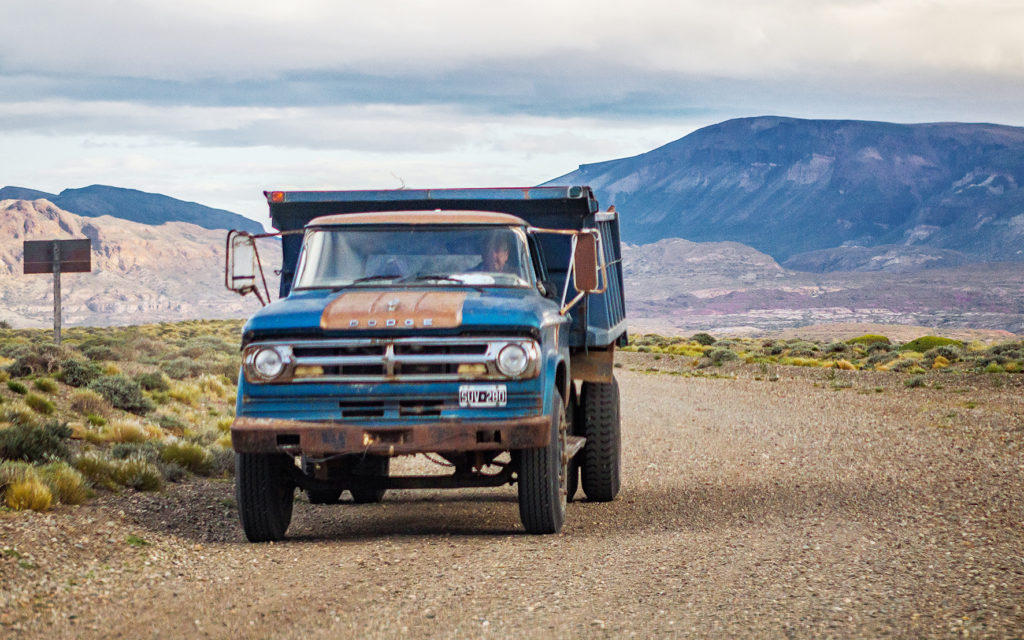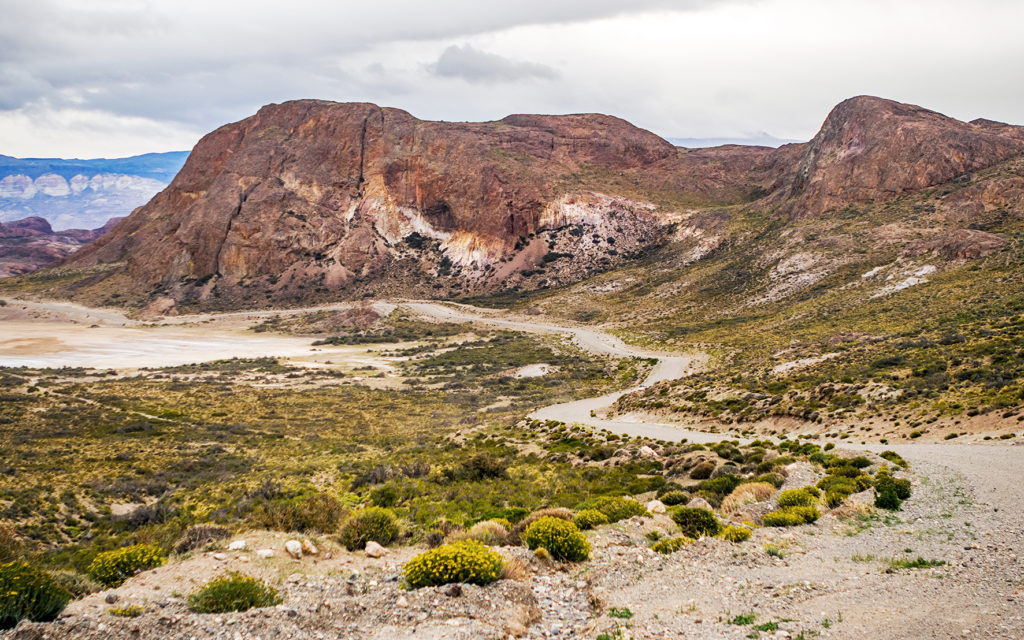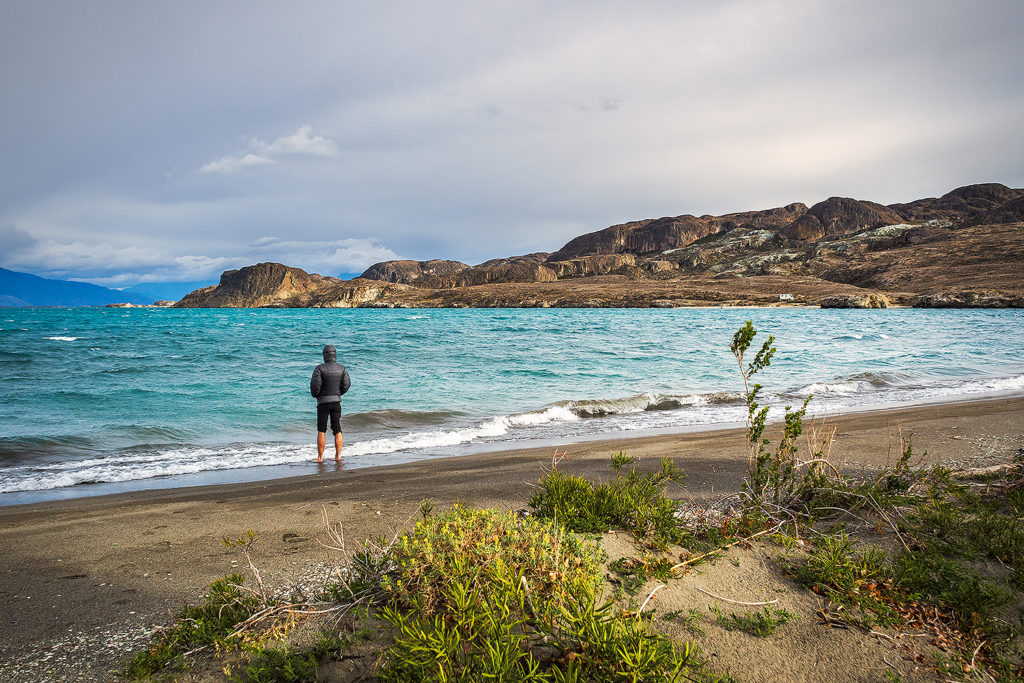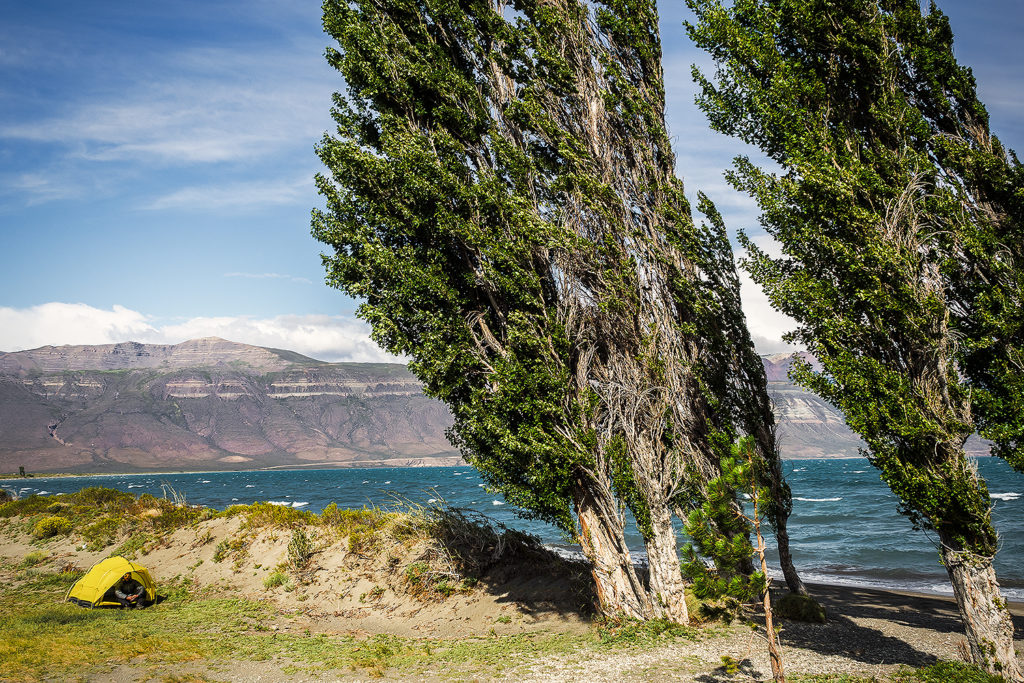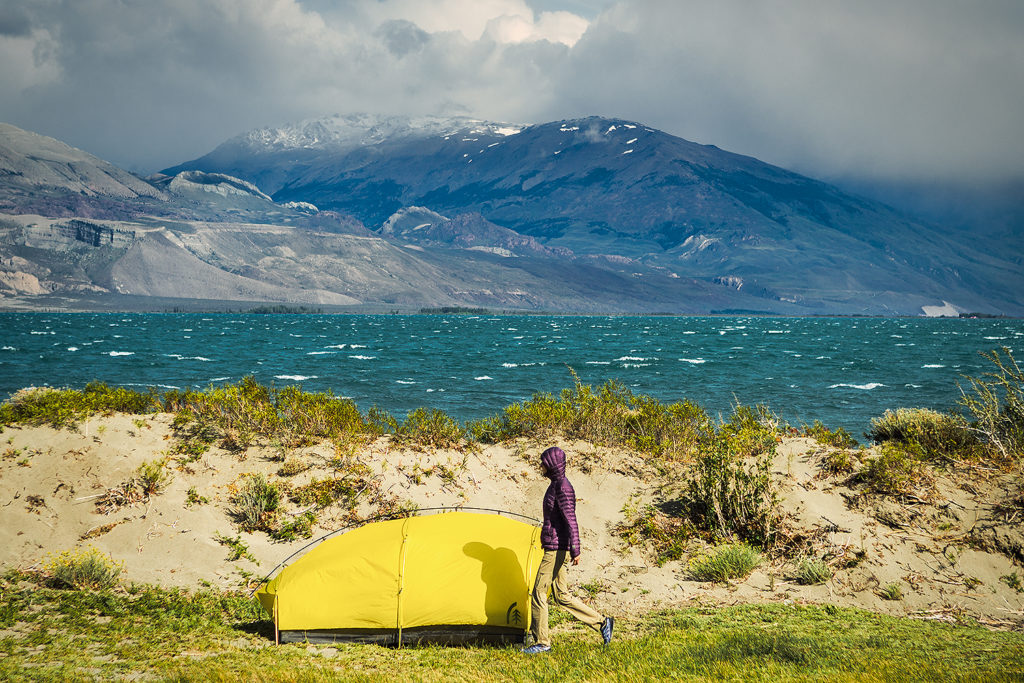On December 23rd, we headed for El Calafate, and the Perito Moreno glacier. El Calafate was a much bigger town on the shore of Lago Argentino. After the 3-hour drive from El Chaltén, we stopped in town to have sandwiches by the lake, then continued on to the southern portion of Los Glacieres National Park. It was 660 pesos (55 CAD) to enter the park, which seemed a bit much at first but in the end totally worth it to admire the impressive glacier. With a surface of 250 square km and 30km of length, it is the third largest reserve of fresh water in the world.

A network of stairs and platforms were built in front of the lake, providing multiple vantage points of the glacier. As it is often the case when staring at an immensely large landscape, it was hard for our brains to grasp the scale of this giant, and realize how far we actually were even though the lowest platform made us feel like we could almost touch it. We were there later in the afternoon, which apparently was good timing as it was the best time of day to witness large shards of ice breaking off the vertical walls and falling into the lake.
The sound it made was incredibly loud, probably amplified by all the crevasses and cavities in the ice and reminding us of the real size of the beast. It’s pretty funny to think that with growing popularity, tourists flood the park every year to take a look at – ultimately – a huge chunk of cracking ice. But what a mesmerizing chunk it was.
We spent a couple of hours marveling at the natural phenomenon. Then we took a quick walk on the shore of the lake further away before leaving the glacier behind us, probably one of the most memorable sight of this trip.
Our favorite app led us to a free campsite on the southern side of the lake with firepit and mountain view. The perfect spot for our last night on the road before we reached Puerto Natales, our base camp before embarking on a 6-day trek around Torres del Paine.
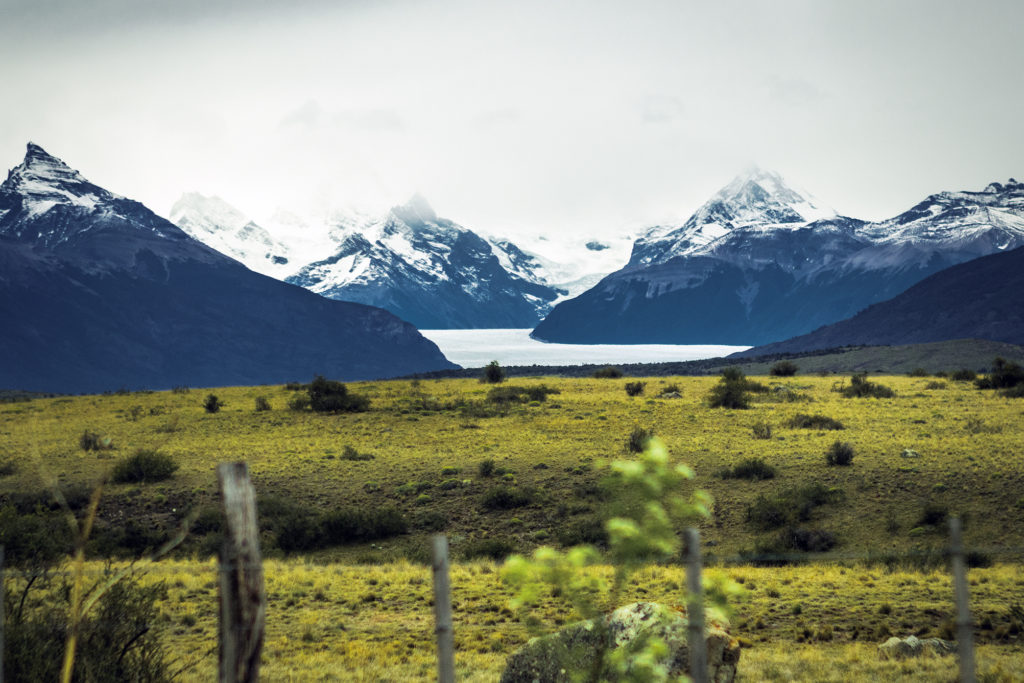
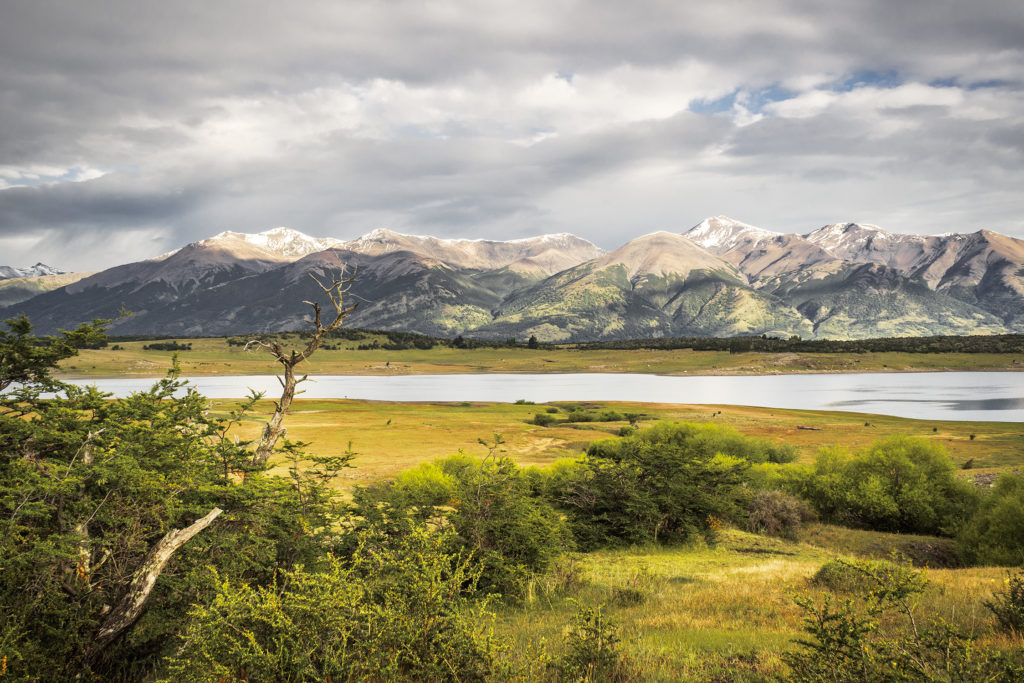
The next morning we had to cross the border again to go back to Chile. The 60km of road prior to the border were some of the roughest we’d driven on, with once again not much to look at. Thankfully we had loaded up the ipod with podcasts, so that kept our minds entertained while driving on these long stretches of road for hours.
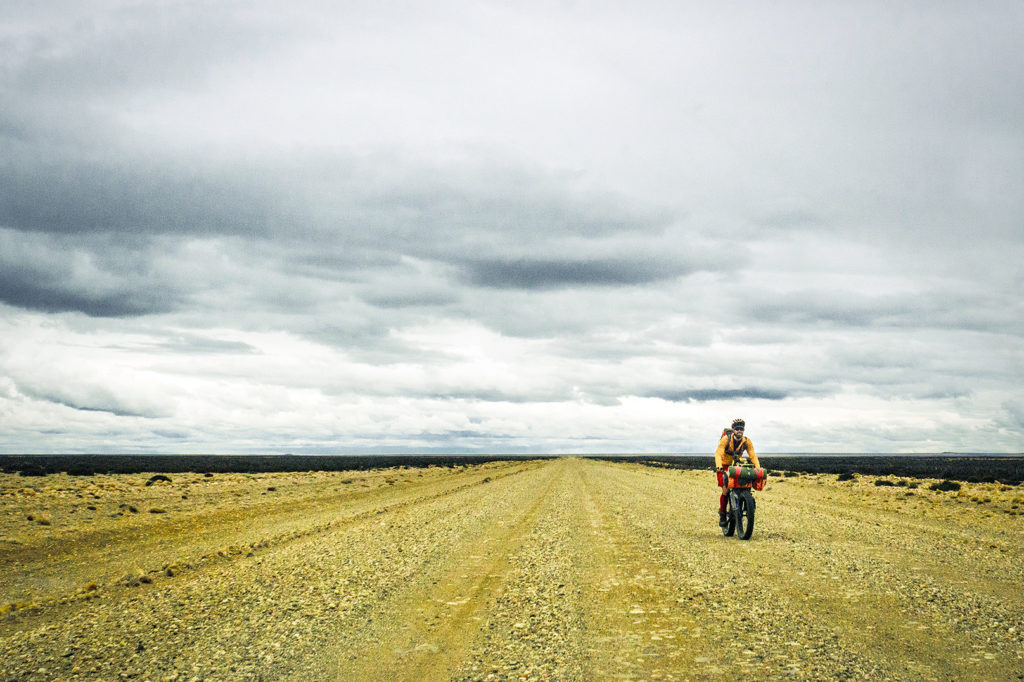
The border crossing near Rio Turbio was quite a lot bigger this time, with a good number of people going through. We went through the Argentinian side first, to exit, then drove 3km to the Chilean entry point. We had been warned that you couldn’t bring any food in Chile, but they let us go with what we had left – again it was mainly canned and dry food, no fresh produce, so it looked like it was fine. As we were crossing the border, we noticed we had another flat tire. So we had to pull over a bit further and replace it with the spare once again. We were only 25 km from Puerto Natales so we just kept going on the spare.
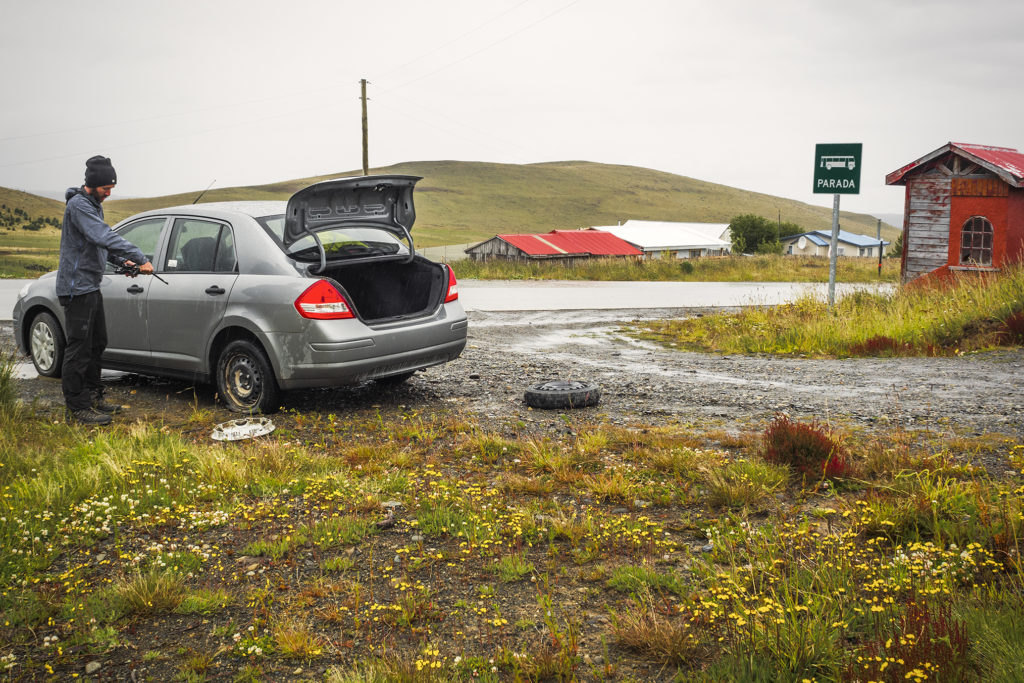
We arrived in Puerto Natales around 3pm. The first thing I wanted to do was buy food for the first few days of the trek (we had read that there were small shops in every campground so there was no need to buy for the whole week). Since it was Christmas eve, I thought stores might close earlier than usual, and they would most definitely be closed the next day. So as soon as we arrived we looked for a grocery store. We found one on the main street (Manuel Baquedano) in the center of town. The store was of decent size but not huge and we were able to get everything we needed, including a couple of nice freshly made empanadas for lunch. Turns out there was also a big Unimarc a couple of blocks away, but it’s a good thing we avoided it as apparently, the lines to the cash registers where insane that day. Once we had all our supplies, we started looking for accommodation.
Puerto Natales is the starting point for anyone going to Torres del Paine. As such, it is a pretty big tourist hub, and accommodation is everywhere. We walked around the center of town to check out hostels in the area, but then decided to drive just a few blocks away from the center, where it would be quieter.
There were “Hostal” signs pretty much every block, so we went into a few of them to check them out. Eventually we settled on Hostal Carlitos – the selling point was the big wood burning stove in the main room that gave the place just the amount of cozy we were looking for.
Hostal Carlitos was a family run business. There was a big Christmas tree in the main room, with presents underneath. The girl at front desk told us that the whole family was getting together that night and was having a traditional Christmas eve dinner, and that we were welcome to join. Dinner would be at 12am. Although we were honored that they invited us, the chances of us still being awake at midnight were pretty slim – and sure enough, we were out by 9:30pm.
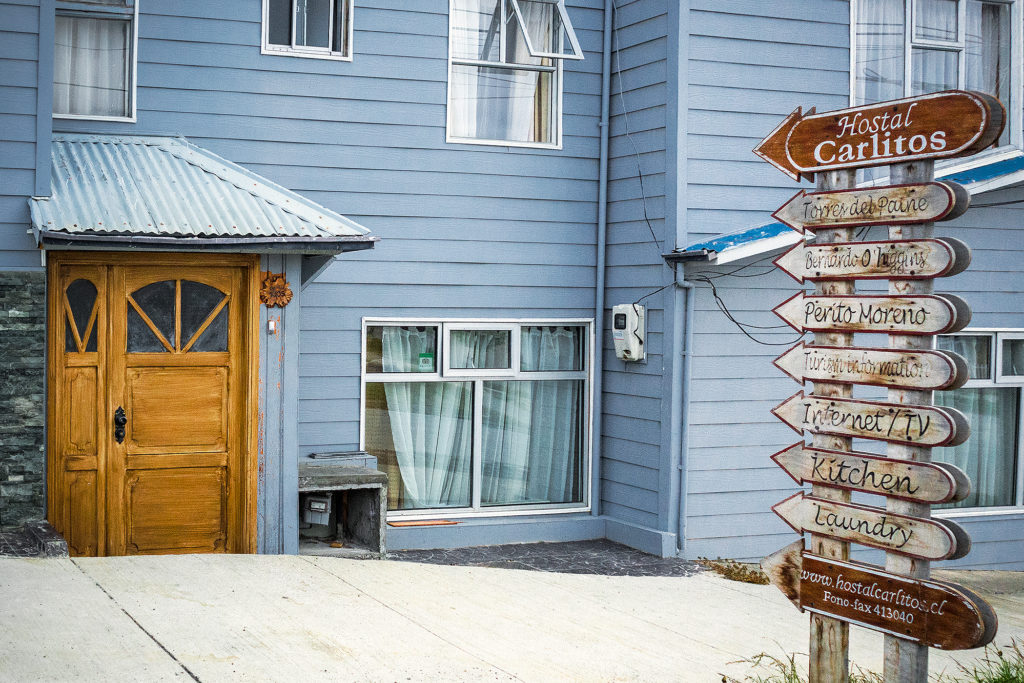
The next day was December 25th, and everything in town was closed. We took this opportunity to take a “day off” from traveling, and reset. In the morning we took a walk around the town and along the water. We also found out that the bus station was only a few blocks away, so we first headed there to see if we could book our tickets to go to Torres del Paine the next day. At first it looked like everything was closed, but a couple of companies counters were open. We bought our tickets from Buses Fernandez, but there were about 8-10 different companies there offering trips to multiple places, including Ushuaia and Punta Arenas, the city we would be flying out from to return home.
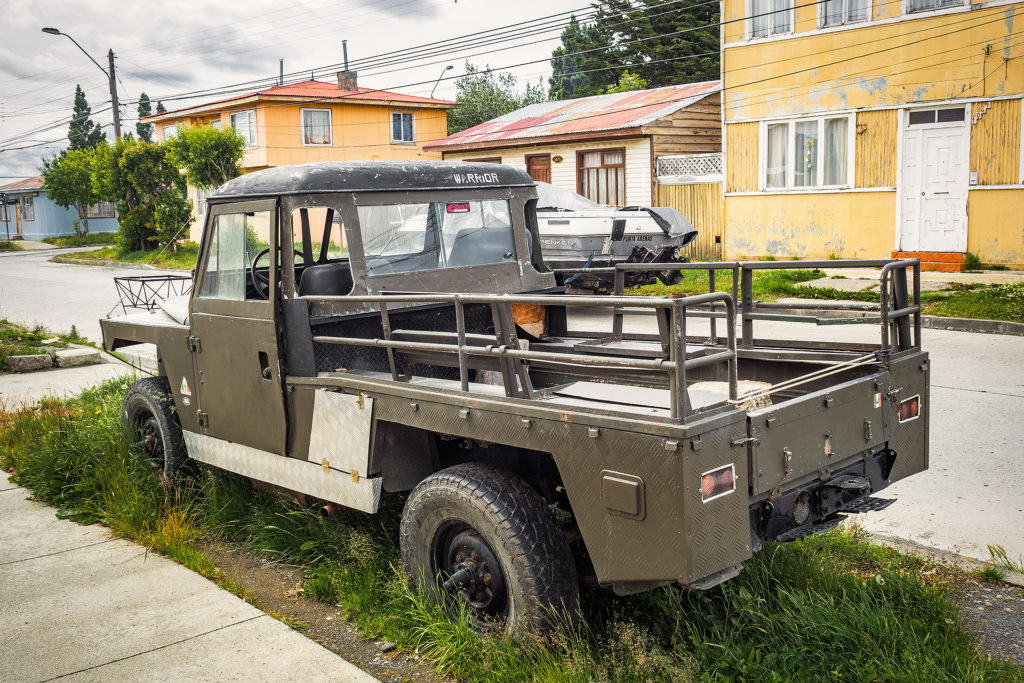
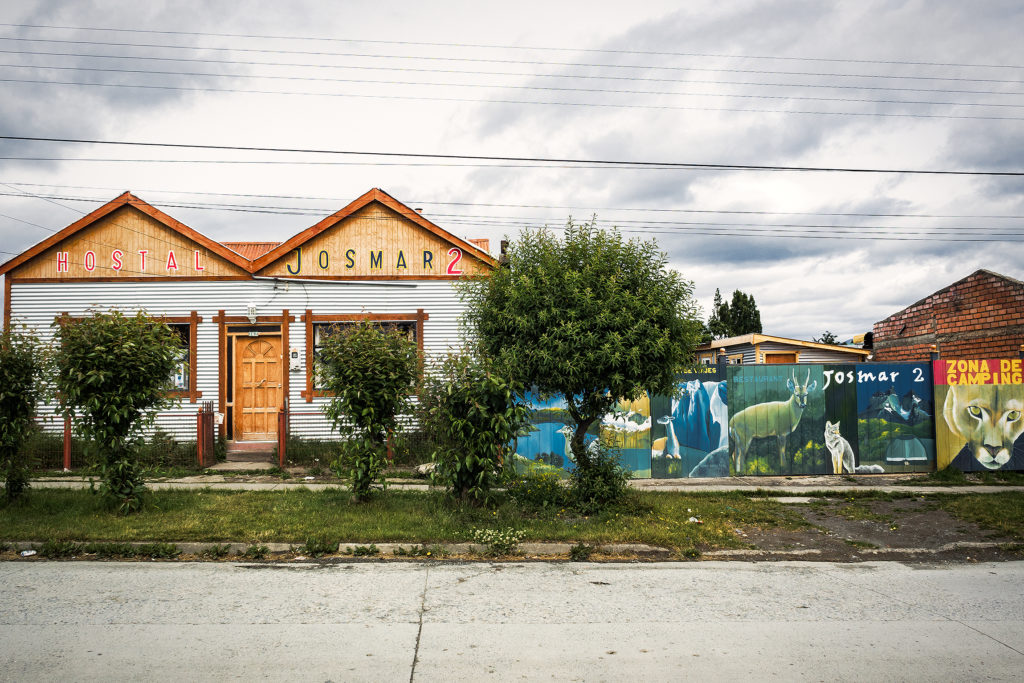

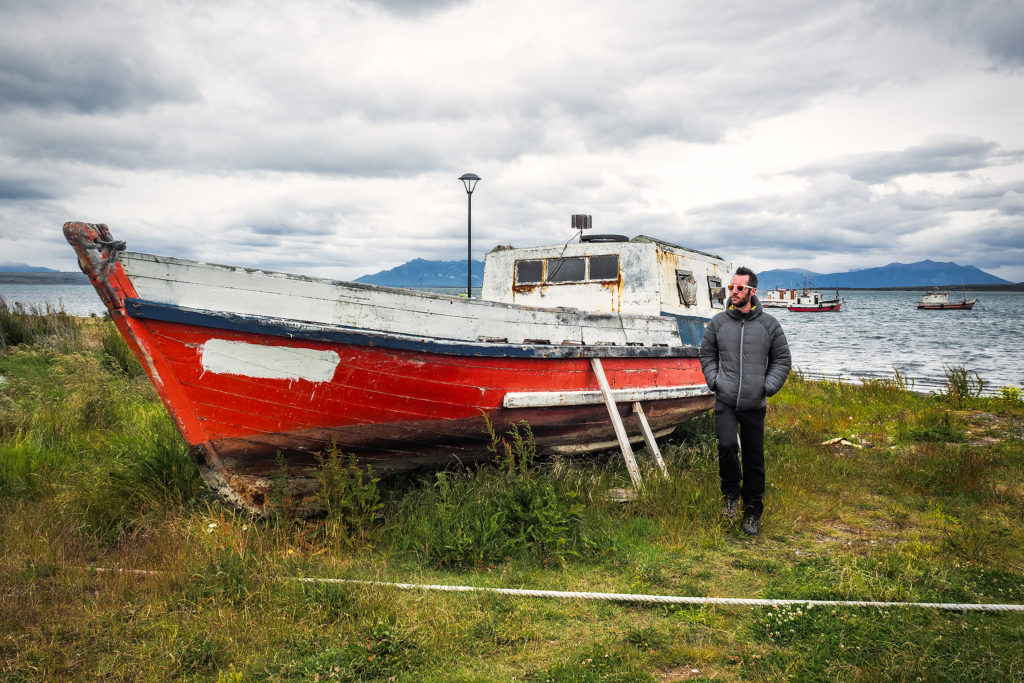
Once we had our tickets, we took a walk around then headed back to the hostal. We were due to return the car that afternoon. Enrique (our car rental guy) had told us to just email him with our location and he would send his friend Raul to get the car. Sure enough, around 4pm Raul showed up and after handing him all the paperwork, we said goodbye to our ride.
Then we just hung out for the rest of the day. With no more car to throw our stuff in, we now had to make sure everything still fit into our backpacks, including food. It was impressive to see the amount of stuff we had, when all laid out on the bed, and that somehow everything fit into those two backpacks. Even though we had done our best to pack light originally, we admittedly had a bit too much for the treck, especially the summer clothes we wore in Costa Rica. We could have maybe looked for a place to store some of it, or even mailed some stuff to Canada, but at that point we figured it would be fine. My pack was about 12kg and Brice’s 18kg – before food. So yes, heavier than it could have been, but in the end we managed.
The hostal had a little kitchen that we could use and a couple of long dining tables, so we had breakfast lunch and dinner there and took the day to rest.
